It seems we can’t find what you’re looking for. Perhaps searching can help.
Sign Up for newsletter!
Subscribe to get the latest eBook!
Hotline







When it comes to brands that migrate from Magento to Shopify Plus, it’s good to read their success stories in sales behind. In the second part of this series, let’s continue to delve into more brands that chose to migrate their eCommerce platforms from Magento to Shopify Plus, and explore how this decision paved the way for boundless success.
Originally established as a wholesaler distributing high-quality underwear through pharmacies, Boody later identified new growth opportunities by venturing into online sales for environmentally conscious fashion enthusiasts.
Boody initially deployed an eCommerce website on the Magento platform, but the absence of a dedicated technology team severely limited management, operations, and customization capabilities.
Also, inconsistencies between the frontend on mobile devices and laptops, utilizing different technological solutions, resulted in a non-uniform user experience and inefficient use of system resources.
To address these challenges and pursue goals of international expansion, Boody sought a platform that could alleviate the burden of management and operations while providing a consistent customer experience.
The fashion brand switched from Magento to Shopify Plus, promptly implementing automated solutions for processes such as email and security checks using Shopify Flow. Boody also adopted Shopify Payments to facilitate online transactions without the need for integration with third-party payment service providers.
The platform overhaul with Shopify Plus significantly enhanced the operations. Leveraging the robust integration capabilities of Shopify Plus, Boody seamlessly integrated with third-party systems to strengthen customer relationships, including platforms like Klaviyo, Gorgias, and Odoo.
Benefiting from the flexibility and solutions offered by Shopify Plus, Boody developed a customized eCommerce website without requiring extensive technical expertise. This allowed the Boody team to focus on multi-channel sales strategies and international expansion.
Shortly after the platform transition, Boody rapidly expanded into 10 international stores, witnessing a 70% increase in online sales and a 5% rise in conversion rates. With Shopify Plus, Boody is realizing its mission to become the world’s most beloved sustainable underwear brand.
Learn more: 15 brands migrate from Magento to Shopify Plus Pt.1

Alessi is a renowned Italian brand specializing in the design and manufacturing of high-quality household and interior decoration products. The brand was established in 1921 and has since become one of the icons of Italian art and design.
Alessi pays attention to every detail in product design while relying on third-party units to enhance the aesthetics of its website design.
However, the Magento eCommerce platform, which Alessi had been using for a long time, suddenly announced the end of support for older versions, obliging merchants to upgrade to a higher version.
Faced with the complex and time-consuming upgrade process, Alessi decided to seek an alternative solution.
Moreover, the outbreak of the Covid-19 pandemic in Italy and across Europe prompted Alessi to make necessary changes to maximize online sales. The business executives aimed to re-establish the platform within just 12 weeks.
In reality, Boody achieved the goal in less than 3 months by completing the e-commerce platform transition from Magento to Shopify Plus.
Since implementing Shopify Plus, Alessi has seen a 233% increase in page views, a 109% increase in conversion rates, a 222% increase in transaction volume, and a 210% increase in total online revenue.
Alessi can now rest assured that customers will have an engaging shopping experience on the website, reflecting the true brand image that the business has spent a century building.

Rebecca Minkoff, a renowned high-end fashion brand from the United States, is well-known for its handbags, footwear, and fashion accessories. The brand’s products often embody a blend of alluring, practical, and creative styles.
Rebecca Minkoff not only focuses on creating aesthetically pleasing fashion items but also consistently leverages technology to provide customers with novel shopping experiences over the past decade.
In addition to this, the customer’s online shopping experience on the brand’s eCommerce website is a particular area of emphasis. The migration from the Magento eCommerce platform to the Shopify Plus platform is also part of Rebecca Minkoff’s strategy.
Utilizing solutions available within the Shopify Plus ecosystem, coupled with robust and seamless integration capabilities, has enabled this fashion brand to implement 3D and AR (Augmented Reality) technologies.
These technologies aim to enhance customers’ unique, detailed, and realistic views of products, ranging from styles to materials.
According to the company, individuals interacting with 3D models are 44% more likely to add that model to their shopping carts compared to those who do not interact. Among visitors who engage with 3D models, they have a 27% higher likelihood of placing an order compared to non-interacting individuals.
Rebecca Minkoff notes that when customers view a product in AR, their likelihood of making a purchase increases by 65%.
This positive step in eCommerce has significantly contributed to business growth. According to Rebecca Minkoff, 65% of customers interacting with AR products tend to make purchasing decisions swiftly, and with 3D technology, this figure is 27%.

Established in 2012 in the United Kingdom, Blakely is a unisex fashion brand known for its youthful and dynamic style. Blakely’s product range includes t-shirts, hoodies, sweaters, leggings, jeans, and fashion accessories. The brand aims to provide high-quality, beautifully designed, durable products that align with current fashion trends.
Blakely’s eCommerce website was initially built on the Magento platform. However, the system frequently experienced crashes, especially during peak shopping periods like Black Friday, affecting customer shopping experiences and the brand’s revenue.
Another concern for Blakely with the previous platform was its limitations in integrating with third-party applications, posing challenges in reaching target customers and efficiently managing customer data to drive real growth. Furthermore, the lack of tools for data management led to issues in the personalization and localization of the customer experience.
Therefore, after careful consideration, Blakely decided to migrate from the Magento platform to Shopify Plus. With the implementation of Shopify Plus, Blakely successfully launched two additional eCommerce websites specifically catering to EU and U.S. customers, enabling the brand to sell more efficiently in international markets.
Blakely also utilized Shopify Plus’s available themes and seamlessly integrated with third-party tools to not only provide an optimal shopping experience for customers but also support effective data management.
Switching to Shopify Plus brought about significant positive changes for Blakely in terms of sales. Specifically, the conversion rate increased from 1.4% to 2.6%, and the EU store witnessed an impressive 30% growth since its launch. Global sales increased by 49%, with a 130% increase in sales in the U.S. and a 60% increase in sales in the EU.

Peepers is a fashion brand specializing in reading glasses and sunglasses with its main headquarters located in Michigan, USA. The brand is known for blending modern design with quality, offering high-quality products at affordable prices.
Despite several redesigns that consumed considerable time and budget, Peepers’ Magento website failed to meet expectations.
The brand aimed to enhance page loading speed and provide customer-centric features, but the costs associated with each change or system update on Magento proved to be a significant expense for Peepers.
Therefore, Peepers made the switch to Shopify Plus to leverage the platform’s flexible customization capabilities with a more cost-effective approach than Magento.
Furthermore, offering a customized payment experience enhances the security of customers’ personal and payment information, thereby increasing customer trust when shopping on the Peepers website.
Since transitioning from the Magento platform to Shopify Plus, this fashion brand has witnessed a 30% increase in conversion rates and a 20% increase in the average order value (AOV).

Here are the next 5 brands in the series re-platform from Magento to Shopify Plus. While Boody’s motivation for the switch is to ease the burdens of management and operations, Alessi, in contrast, seeks to avoid the expenses and time involved in upgrading to a higher platform version.
Rebecca Minkoff, however, aims to capitalize on the existing ecosystem of Shopify to implement 3D and AR technology solutions for their eCommerce website.
Similarly, Blakely and Peepers overhauled their platforms to streamline operational time and costs, leveraging the advanced integration capabilities of Shopify Plus to deliver a distinctive customer experience.
Throughout SECOMM’s process of executing platform migration, the pivotal factor determining success is a detailed and well-structured conversion plan.
Contact SECOMM or directly call the hotline at (028 7108 9908) to collaborate on devising the optimal plan for the platform migration.
 2
2
 5,263
5,263
 0
0
 1
1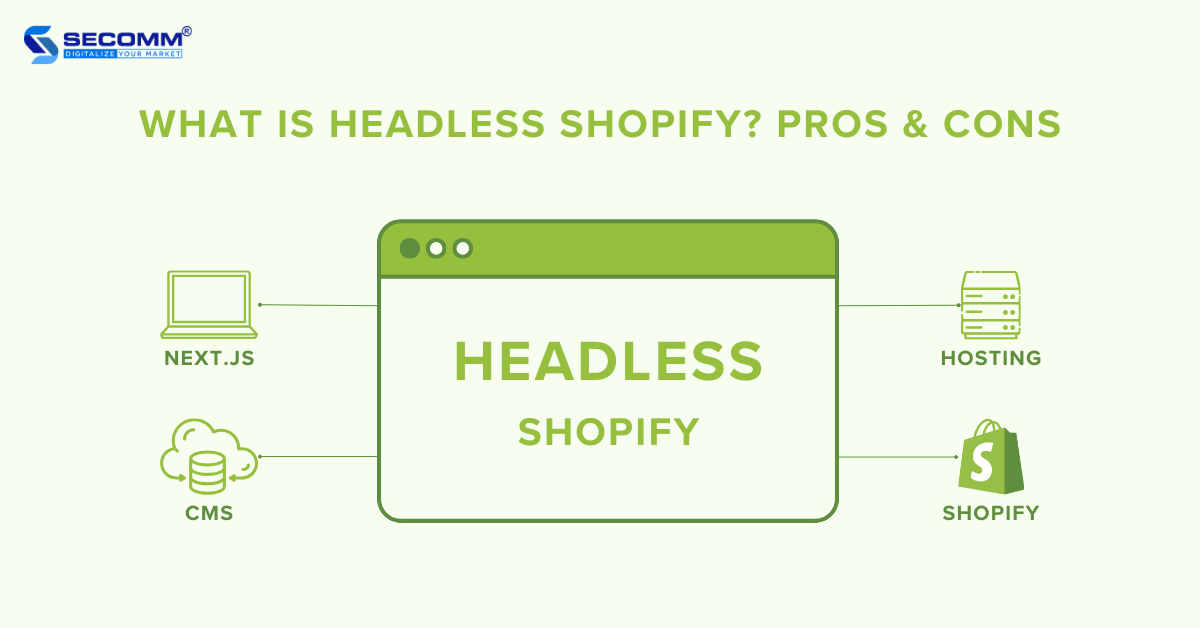
eCommerce is undergoing a revolution, where businesses no longer need to strictly bind to traditional eCommerce models like Monolithic Commerce. Instead, they can create distinctive and adaptable customer experiences across a variety of digital channels through a methodology known as Headless Commerce.
Headless Commerce involves the separation of the frontend and backend of an eCommerce website. This allows the backend to transmit content through APIs to diverse frontends, including websites, mobile apps, IoT, POS, and more. Headless Commerce also gives you greater flexibility in customizing frontends compared to monolithic systems.
Learn more: Monolithic, Headless, Composable or MACH artchitecture
Among the prominent eCommerce platforms today, Shopify stands out with numerous effective solutions for headless deployment. This article on Headless Shopify delves into the concept, advantages and disadvantages, and solutions, and offers insights to help determine whether it is a suitable fit for every business.
It is a way to build an eCommerce website using Shopify but separate the frontend (user interface) and backend (product management, order processing, payment system).

With this headless solution, businesses have the flexibility to use their preferred content management system (CMS) or frontend technology and then connect it to Shopify’s backend through the Storefront API.
Key features of a Headless Shopify store include:
Learn more:

Headless Shopify provides extensive customization for interface design and personalized user experiences. While the themes, including both free and premium options, boast attractive and modern designs with diverse choices for various business niches, these themes still come with constraints in terms of customization and features.
By using it, you can maximize customization for both interface design and user experience, creating a unique identity and enhancing your competitive edge.
It imposes no limitations on the type of devices or platforms that can display content. Content created and managed on the backend system can be displayed on any device or platform that the business desires.
In other words, content data from the Headless Shopify system is distributed in API format to various modern frontend technologies, such as websites, mobile apps, IoT, POS, etc. This facilitates the distribution of user-tailored content across different devices and platforms, ensuring seamless and optimized multichannel selling.
With Headless Shopify, you can customize frontend interfaces, integrate Headless CMS, and incorporate local payment systems to distribute content and provide a shopping experience tailored to users in each market. This customization includes aspects such as domain, language, currency, payment gateways, and local payment methods.
Plus, you can leverage the Shopify Markets solution, which offers a full range of features, both basic and advanced, enabling you to expand your reach globally.

Traditionally, Shopify has provided businesses with a ‘Plug-and-play’ solution, meaning that applications or utilities can be integrated into an online store and activated for easy use without the need for complex programming.
However, The headless solution provides you with advanced customization and scalability, requiring a higher level of technical expertise and complexity.
To address this challenge, you can partner with specialized developers like SECOMM for tailored guidance throughout deployment. These experts can provide insights on the recommended customizations to enhance system performance and user experience.
When deploying Headless architecture, there are three types of fees to consider: platform fees, development fees, and maintenance fees.
As deploying Headless Commerce requires high technical expertise, the development cost will be significantly higher than implementing a Monolithic Commerce model.
Moreover, going Headless with SaaS platforms such as Shopify or CMS, ERP, PIM, and CRM requires monthly payment fees, making cash flow management challenging due to the potential fluctuations in platform usage, affecting monthly expenses.
Learn more:
Throughout the evolution of eCommerce technology, Shopify has accurately anticipated and provided solutions to meet the deployment needs of businesses worldwide.
Notably, the trend of adopting Headless Commerce has been shaping the global landscape for several years, and Shopify has offered outstanding solutions for businesses to implement Headless based on its platform infrastructure.
The beauty brand Victoria Beckham Beauty was launched in 2019, aiming to provide an optimal user experience across multiple global markets with high performance. To achieve this, the company deployed Headless Shopify Plus to manage products, orders, and payments.
It integrated Contentful as a Headless CMS to store and distribute content data to frontends, including the website and mobile app, through the Storefront API.

Since its establishment in 2015, Paul Valentine has become a major global jewelry brand with over 12 local stores, each with its dedicated sub-domain, to cater to diverse user demographics.
To streamline content management for these 12 stores within a centralized system, Paul Valentine has developed a Headless eCommerce website using the Vue.js framework on the Shopify Plus platform for backend management.
The Headless CMS platform, Contentful, is seamlessly integrated into the Shopify Plus backend system, enhancing the efficiency of content management and distribution across the interfaces of the 12 local stores, spanning both the website and mobile app through the Storefront API layer.

To meet the requirement of integrating an eCommerce website and a corporate information website into a unified user experience, SECOMM has supported Vinamilk in restructuring the system with a Headless architecture. Shopify Plus manages the ‘eCommerce’ aspect, while a Headless CMS platform is utilized for storing, managing, and delivering content to user interfaces. This results in a comprehensive custom Headless Commerce + Headless CMS model.
Learn more: 15 brands deploy Headless Commerce with Shopify Plus

The answer is no.
While both the core and the Plus can implement Headless Commerce, the high flexibility of Shopify Plus makes the process easier, especially when utilizing the Headless solutions.
In essence, headless architecture is better suited for businesses with high demands for flexibility, customization, and scalability, as well as a desire for uniqueness to craft a diverse and seamless customer experience. If your business simply wishes to engage in straightforward online selling, core Shopify is sufficient.
On the other hand, for those seeking a balance between flexibility and stability, Plus is a viable option.
With a wealth of experience going headless for major enterprises like Vinamilk and Suzuverse, SECOMM boasts a highly skilled technical team with deep expertise in Shopify and the execution of Headless solutions on this platform.
Contact or call SECOMM’s hotline directly at (028 7108 9908) to receive advice on deploying Headless Shopify that is suitable for each business model. The team will also provide a detailed development roadmap divided into different stages.
 2
2
 7,307
7,307
 0
0
 1
1
The Shopify Plus eCommerce platform is known not only for its flexibility and high customization but also for its ability to integrate with a variety of apps in the Shopify Plus Certified App, optimizing customer experiences, managing sales, shipping, etc.
The eCommerce world continues to evolve, and choosing the right integrated apps can be a crucial factor in the successful deployment of an eCommerce website.
This article introduces 10 Shopify Plus apps that businesses should consider integrating into their eCommerce websites. These apps not only help optimize operational processes but also ensure that businesses meet all customer needs, create effective campaigns, and increase conversion rates.
Shopify Plus is the premium version of Shopify, offering superior customization and scalability designed to meet the needs of large-scale businesses. Shopify Plus apps are third-party applications or services integrated with the Shopify Plus system to provide management capabilities for various aspects of eCommerce operations, such as marketing, sales, order and shipping management, analytics, and performance reporting.
Using Shopify Plus apps can bring various benefits to businesses, including:
Judge.me is an excellent app designed for businesses using the Shopify Plus platform. This app focuses on collecting, managing, and displaying product reviews and ratings from customers.

Rating: 5/5
Reviews: 18,391
Core features:
Price: The Judge.me app offers two available solution plans, including:
UpPromote is a Shopify Plus app tailored to meet the needs of affiliate-driven growth for Shopify merchants. This is the top-trusted affiliate marketing solution that supports merchants to build, manage, and succeed in their affiliate programs with ease. UpPromote is suitable for all business sizes, with prices ranging from FREE to $199.99/ month. Furthermore, UpPromote implements customization upon request for Enterprise customers.

Rating: 4.9/5
Reviews: 2,812
Core features:
Price: UpPromote offers a Free plan and 3 paid plans with a 14-day free trial, including:
This is a Shopify Plus app that allows businesses to design personalized customer experiences. This app ensures that the business website provides suggestions and offers products that customers truly care about to satisfy them and thereby increase sales.

Rating: 4.9/5
Reviews: 508
Core features:
Price: Rebuy offers Shopify Plus users three solution plans, including:
Among the Shopify Plus apps recommended for eCommerce websites, Smile is frequently mentioned for its Loyalty program applications. This Shopify Plus app helps businesses build and manage customer loyalty programs on Shopify Plus stores to enhance customer interactions, increase conversion rates, and attract potential customers.

Rating: 4.8/5
Reviews: 5,354
Core features:
Price: Smile offers three solution plans:
Another popular Shopify Plus app is the Shogun Landing Page Builder. This app allows retailers to create beautiful and effective landing pages by providing a visual drag-and-drop editor, enabling Shopify Plus merchants to create custom landing pages without requiring any programming skills.

Rating: 4.8/5
Reviews: 3,216
Core features:
Price: Shogun offers four solution plans for Shopify Plus businesses:
Referral is a Shopify Plus app that allows merchants to create and manage referral and affiliate programs. This Shopify Plus app offers a range of features and options to help businesses encourage customers and influencers to refer to their products or services.

Rating: 4.8/5
Reviews: 2,049
Core features:
Price: Referral offers two solution plans with a 14-day free trial:
AfterShip Returns by Shopify Plus is an optimal solution for businesses seeking to improve the return experience and enhance customer loyalty. The app provides many user-friendly features and options, allowing businesses to automate the return and refund processes and optimize inventory costs.

Rating: 4.6/5
Reviews: 2,118
Core features:
Price: AfterShip offers three solution plans for Shopify Plus businesses:
Recharge Subscription is a popular Shopify Plus app that enables businesses to build a seamless shopping journey to maximize revenue and create long-term loyal customers.
With Recharge’s outstanding features, businesses can easily, quickly, and effectively create subscription plans for products or services.

Rating: 4.5/5
Reviews: 1,488
Core features:
Price: Recharge offers a 30-day free trial for businesses.
Gorgias is an app designed for Shopify Plus businesses, focusing on customer service management and online support. Deeply integrated into the Shopify Plus store, Gorgias provides a range of features to help businesses optimize support processes and enhance the customer experience.

Rating: 4.4/5
Reviews: 632
Core features:
Price: Gorgias offers a 7-day free trial with four solution plans.
Among the Shopify Plus apps, Klaviyo stands out as an application specializing in automated email & SMS marketing. This app helps businesses build and manage automated email or SMS campaigns based on customer data to optimize interactions with customers.
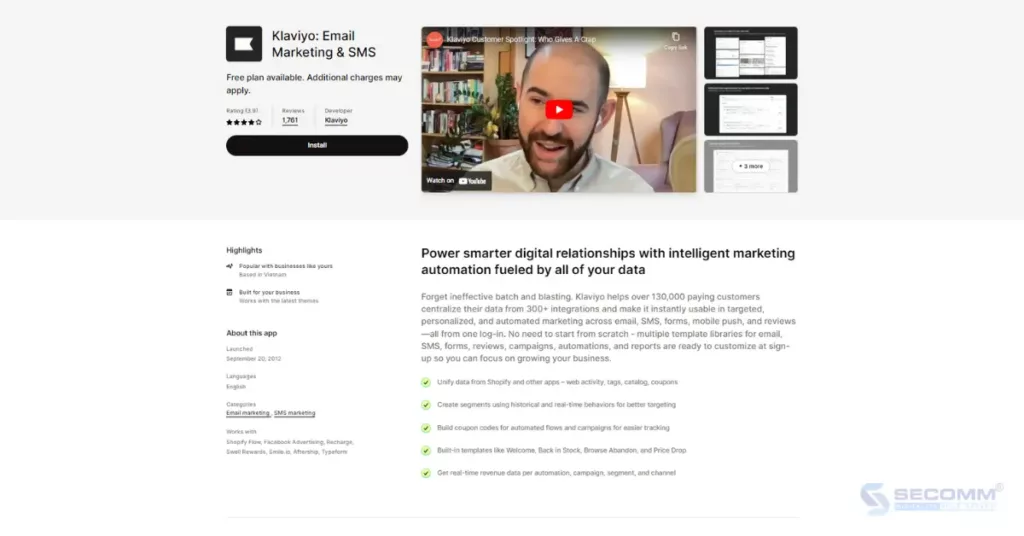
Rating: 3.9/5
Reviews: 1,758
Core features:
Price: Klaviyo offers three solution plans for businesses.
ShipStation is a popular application for managing shipping and delivery processes, integrated into the app store of Shopify Plus. This app helps businesses efficiently manage shipping and delivery processes, optimize label printing, and expedite delivery times.

Rating: 3.6/5
Reviews: 674
Core features:
Price: ShipStation offers a 30-day free trial for businesses.
Above are the top 10 Shopify Plus apps in the Shopify Plus Certified App Store. The introduced apps in this article are designed to help businesses optimize the shopping experience, improve sales management, and create more effective marketing campaigns.
However, not all of them may be suitable for every business. Businesses must research and carefully consider before deciding to install and integrate these Shopify Plus apps.
Contact or call SECOMM directly at their hotline (028 7108 9908) for advice on selecting the most suitable apps for your Shopify Plus eCommerce website.
 2
2
 7,806
7,806
 0
0
 1
1
Salesforce Commerce Cloud is a scalable cloud-based eCommerce platform that enables brands to meet growing business demands.
Below is a list of the top 10 websites currently using Salesforce Commerce Cloud for reference by businesses.
Cotton:On is a well-known fashion brand from Australia, established in 1991. This brand specializes in youthful and dynamic fashion products suitable for the younger generation, including clothing for men, women, children, accessories, and travel items.

When using Salesforce Commerce Cloud, Cotton:On quickly built a multi-channel eCommerce website and activated 10 different websites globally within just 12 months.
“Salesforce has helped us scale our multi-channel capability and meet demand for more personal journeys” – Brendan Sweeney, General Manager, Cotton:On Group.
Versace is a luxury fashion brand from Italy, founded in 1978 by Gianni Versace. The brand specializes in high-end fashion products, including clothing, footwear, accessories, furniture, and fragrances.

Salesforce Commerce Cloud has helped Versace create an optimized user experience for its eCommerce website, making it easy for customers to search, shop, and make payments. The website is designed to be simple, user-friendly, and suitable for the brand’s upscale customer base.
Bvlgari is a luxury fashion brand from Italy that has used Salesforce Commerce Cloud to build its eCommerce website. This website is designed to provide an enhanced personalized shopping experience for Bvlgari’s customers.

Bvlgari has developed personalized product features that allow customers to create their own profiles and store information about their shopping preferences, purchase history, and delivery addresses. This feature helps Bvlgari better understand customer needs and provide them with personalized product recommendations and services.
Samsonite is a multinational manufacturer of luggage and travel accessories based in the United States. The company was founded in 1910 by Jesse Shwayder in Denver, Colorado, USA. Since then, Samsonite has become one of the world’s largest luggage manufacturers, with products sold in over 120 countries.

Samsonite has implemented Salesforce Commerce Cloud to enhance user experience, increase online sales, and analyze customer shopping behaviour.
Callaway Golf is an American golf equipment manufacturing company established in 1982 by Ely Callaway. The company specializes in designing, manufacturing, marketing, and selling golf equipment, specifically clubs and balls, as well as accessories like bags, gloves, and hats.

Callaway Golf has utilized the product filtering feature of Salesforce Commerce Cloud to help customers easily find products based on their needs. The brand has also employed the product recommendation feature to assist customers in discovering new products.
ECCO started as a multinational footwear business based in Denmark, founded in 1963 by Karl Toosbuy. The company specializes in designing, manufacturing, and selling shoes, bags, and other fashion accessories.
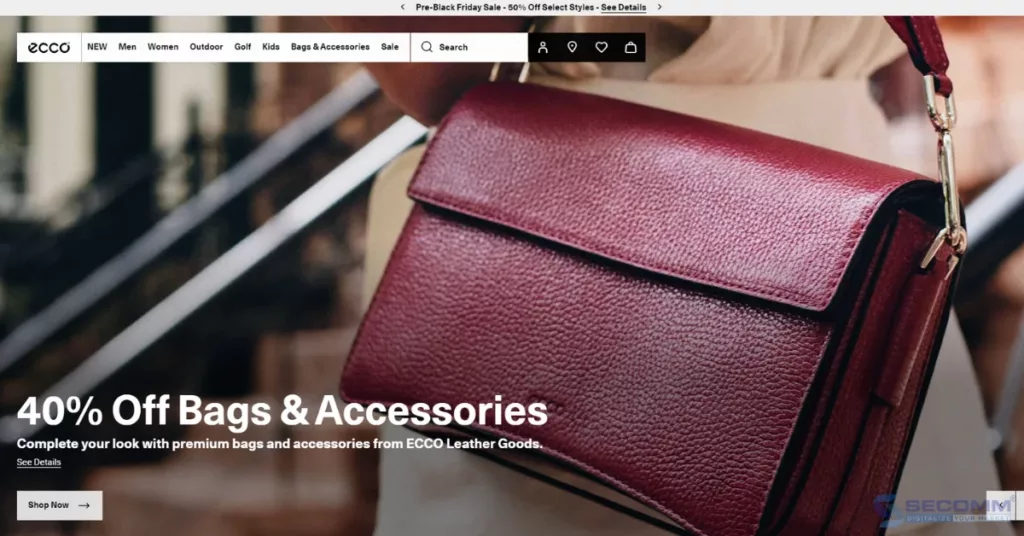
In early 2015, ECCO USA began testing the Endless Aisle, a supplementary feature of Salesforce B2C Commerce, along with other functionalities. This feature helps prevent lost sales by allowing collaborators to place orders based on online inventory.
Jimmy Choo is a luxury fashion brand from the United Kingdom specializing in shoes, handbags, accessories, and fragrances. The company was founded in 1996 by Malaysian-born haute couture shoe designer Jimmy Choo and British Vogue accessories editor Tamara Mellon.

Salesforce Commerce Cloud has helped Jimmy Choo enhance user experience, increase online sales, and analyze customer shopping behaviour. The brand has successfully leveraged Salesforce Commerce Cloud to drive the brand’s growth.
Brunello Cucinelli is a luxury fashion brand from Italy founded in 1978 by Brunello Cucinelli. The company is known for its cashmere sweaters, tailored suits, and other high-end fashion items.

Brunello Cucinelli has utilized Salesforce Commerce Cloud to build an eCommerce website with features supporting user experience and boosting online sales.
GODIVA is a premium chocolate brand from Belgium, established in 1926 by Pierre Draps. The company specializes in high-quality chocolate made from the finest ingredients and crafted using traditional methods.

Salesforce Commerce Cloud has helped GODIVA analyze customer shopping behaviour. This data is utilized to enhance the customer shopping experience, develop new products and services, and optimize marketing strategies.
Toys”R”Us is a leading retailer of toys, games, entertainment, and educational products in Asia. Headquartered in Hong Kong, the company operates over 470 stores with more than 10,000 members across Asia, including Brunei, China, Hong Kong, Macau, Taiwan, Japan, Malaysia, Singapore, the Philippines, and Thailand.

Tim Halaska, Regional Manager for Digital Strategy at Toys”R”Us Asia, acknowledges that traditional stores will always have a certain place in the company. However, COVID-19 and changes in consumer preferences have led to a more significant focus on eCommerce.
The Salesforce Commerce Cloud solution has helped Toys”R”Us streamline online sales and provide a unified experience that caters to consumer needs across Asia.
“Our challenge now is to capture the magic of that in-store experience and bring it online.” – Tim Halaska, Regional General Manager Of Digital Strategy, Toy”R”Us Asia.
Above are the top 10 websites built by Salesforce Commerce Cloud that have achieved success in both brand recognition and revenue. This success serves as inspiration for other businesses seeking the most suitable solutions to compete in the market.
With deep expertise and the development of complex eCommerce systems for clients such as Changi Airport Group (Singapore), Trentham Estate (Australia), and The Warehouse (Vietnam), SECOMM understands the challenges in choosing a platform and deploying eCommerce that businesses are facing.
Contact SECOMM now or call directly at the hotline number (028 7108 9908) for free advice on the eCommerce website building roadmap!
 2
2
 7,920
7,920
 0
0
 1
1
According to Builtwith, Salesforce Commerce Cloud is a platform used by over 12,000 eCommerce websites worldwide. This number has consistently increased over the years, reflecting the platform’s growing popularity.
Here is an analysis of the number of websites using Salesforce Commerce Cloud in different regions:
The United States is the largest country, with over 2,106 websites utilizing this platform.
Salesforce Commerce Cloud is a cloud-based eCommerce platform that helps businesses drive online sales and large enterprises.

This platform provides a comprehensive set of tools to manage every aspect of eCommerce business, from product catalogue management and order fulfilment to marketing and customer service.
All static content (JS, CSS, and images) is distributed through CDN and eCDN (Embedded Content Delivery Network). Additionally, the platform can be configured to use external CDNs through the capabilities of the native platform. This ensures that platform resources are not consumed for static content. The remaining information and data will be handled by Salesforce servers. Data centres are distributed globally, placing them physically closer to end users.
In terms of structure, in such data centres, Salesforce can maintain multiple PODs (Point of Delivery). PODs allow for sharing and providing additional resources to stakeholders if there is a sudden surge in demand for those resources. PODs include firewalls, switches, load balancers, computing power, and file systems.

Salesforce Commerce Cloud has two main versions for building eCommerce websites: Salesforce B2C Commerce and Salesforce B2B Commerce, and more recently, B2B2C.
For the B2C model, it is further divided into three solution packages, including:

Similarly, the B2B model is divided into two solution packages, including:

For the B2B2C model, it will be calculated based on 1% Gross Merchandise Value.
Salesforce Commerce Cloud provides a range of powerful features to help businesses grow their eCommerce ventures, including:
Salesforce Commerce Cloud is one of the rare platforms that supports Headless Commerce by integrating with popular technologies and frameworks such as React, Angular, and Vue.js. This enables businesses to develop custom user interfaces tailored to the specific needs of the brand.
Related article:
In mid-2023, Salesforce introduced two new-generation AI products, including Marketing GPT and Commerce GPT, at the company’s Connections conference.
Marketing GPT and Commerce GPT empowers Salesforce’s Marketing Cloud and Commerce Cloud, allowing businesses to eliminate repetitive tasks, save time in their workflows, and deliver personalized campaigns and shopping experiences on a large scale.
With Marketing GPT, businesses can automatically generate more personalized emails and create smarter audience segments. With Commerce GPT, brands can provide personalized shopping experiences and customized promotions tailored to customer needs, utilizing the dynamic shopping journey provided by GPT.
Salesforce Commerce Cloud supports Omnichannel, meaning you can provide a seamless shopping experience across all channels, including websites, mobile apps, social media platforms (Facebook, Instagram, Zalo, etc), and eCommerce marketplaces (TikTok Shop, Shopee, Lazada, Sendo, etc).
This allows businesses to easily sell on multiple channels without the need to build and maintain separate solutions for each channel.
Salesforce Commerce Cloud is built on a cloud platform, making it easy for businesses to scale their eCommerce operations without worrying about investing in hardware and software. Salesforce Commerce Cloud also provides features and tools to help businesses efficiently manage traffic and performance, ensuring a seamless shopping experience for customers.
Salesforce Commerce Cloud is utilized by numerous large retailers and B2B enterprises worldwide to create and manage eCommerce websites, reaching a wider customer base.
Hugo Boss is one of the world’s leading premium fashion brands from Germany, established in 1924, with a widespread retail network including stores, distributors, and an eCommerce website. Hugo Boss employed Salesforce Commerce Cloud to build its eCommerce website in 2021.

The platform provides features that help Hugo Boss create a seamless shopping experience, including synchronized product catalogues, cross-channel payments, and shipping and returns. Additionally, Hugo Boss’s website offers personalized features, such as product recommendations based on customer shopping history.
Bvlgari, a luxury fashion brand from Italy, has utilized Salesforce Commerce Cloud to develop its eCommerce website. The website is designed to enhance a personalized shopping experience for Bvlgari’s customers.

A notable personalized feature on Bvlgari’s new eCommerce website is the “My Bvlgari” feature, which allows customers to create their own profiles and store information about shopping preferences, purchase history, and delivery addresses. This feature helps Bvlgari better understand customer needs and provides them with tailored product suggestions and services.
Ralph Lauren is a premium American fashion brand founded in 1967, specializing in luxury fashion products for men, women, and children, including clothing, footwear, accessories, and fragrances.

Salesforce Commerce Cloud assists Ralph Lauren in synchronizing its product catalogue across all channels, including the website, mobile app, and physical stores. This ensures that customers can easily find the products they want to purchase, regardless of the channel they are using.
Salesforce Commerce Cloud is a powerful and flexible eCommerce platform, particularly well-suited for large enterprises to conduct online business more efficiently.
Related article: Top 10 websites built on Salesforce Commerce Cloud
With deep expertise and the development of complex eCommerce systems for clients such as Changi Airport Group (Singapore), Trentham Estate (Australia), and The Warehouse (Vietnam), SECOMM understands the challenges in choosing a platform and deploying eCommerce that businesses are facing.
Contact SECOMM now or call directly at the hotline number (028 7108 9908) for free advice on the eCommerce website building roadmap!
 2
2
 7,006
7,006
 0
0
 1
1
According to the Deloitte 2022 Retail Industry Outlook, up to 67% of businesses acknowledge that the eCommerce platform is their top investment priority due to issues they face with deploying outdated platforms.
Plus, a survey by Digital Commerce 360 revealed that about 27% of businesses are trying to switch their eCommerce platforms despite the associated costs.
Among the myriad of leading platforms today, Shopify Plus stands out as a perfect choice for businesses when deciding to re-platform.
This article will show you 15 reasons why you should migrate to Shopify Plus. Why the platform gains the attention of business leaders and how it can be the key to your development and success in today’s eCommerce landscape.
It is a premium solution of the popular eCommerce platform – Shopify. This version is specifically designed to meet the needs of large businesses with a high investment budget for eCommerce.
It offers flexibility, scalability, and integration, not only helping efficiently build and run an eCommerce website but also providing advanced tools and features to optimize the customer shopping experience.
Here are 15 notable advantages that the platform offers for your business growth, laying the groundwork for you to consider migrating to Shopify Plus.
The dashboard interface is designed to be intuitive and user-friendly, catering to end-users and administrators who directly manage the Shopify store. The intuitive interface allows you to concentrate on developing business strategies and enhancing the customer experience, minimizing the learning curve on how to use the system.
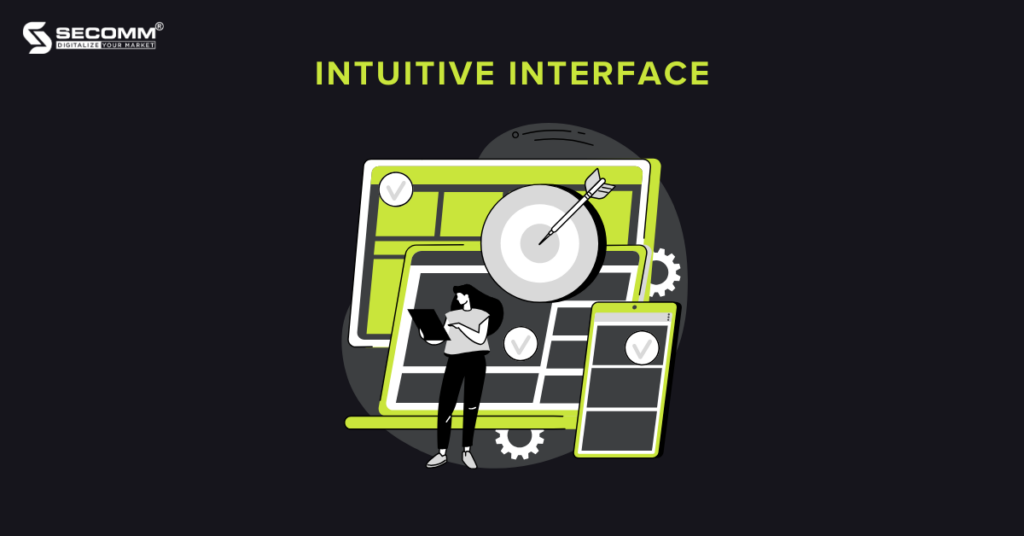
The second reason to migrate to Shopify Plus is the transparency in estimating and managing deployment costs. Typically, when using this platform, you may consider platform fees, transaction fees, app and add-on fees.

The Shopify Plus pricing system is clear and understandable, helping you know all the fees you need to pay monthly. This helps financial planning, avoiding unexpected fees during the deployment process.
Plus, if you partner with highly specialized technical development teams like SECOMM, we’ll conduct a detailed analysis and propose a phased deployment plan for the Shopify Plus eCommerce website. This approach allows you to gain clarity on how your system will be deployed at each stage, facilitating easy adjustments and flexible optimization of financial resources.
Another advantage of Shopify Plus is the automation feature. The platform provides two exclusive tools to help you facilitate this process: Shopify Flow and LaunchPad.
These automation tools help enhance efficiency and save time by streamlining various processes, allowing you to focus on strategic aspects of your operations.
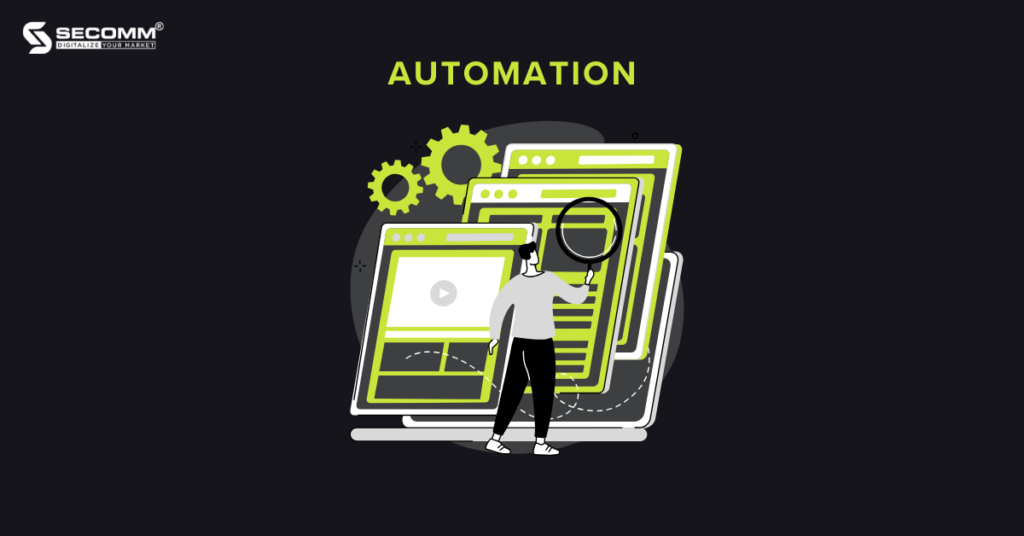
Shopify Plus allows you to reach a broader audience through various sales channels, spanning from offline to online, including leveraging social media for sales and implementing B2B business models.
Plus, you can integrate the Shopify POS solution into their offline stores to offer services such as BOPIS (Buy Online, Pick Up In-Store) and BORIS (Buy Online, Return In-Store). This allows customers to shop in the manner that suits them, combining both online and in-store shopping experiences.

In 2021, Shopify introduced a comprehensive cross-border selling solution called Shopify Markets. With Shopify Markets, you can easily customize their stores for each specific target market. This includes setting prices, languages, payment methods, and delivery options to align with the preferences of local customers.

The robust customization is another reason for businesses to switch to Shopify Plus. This platform allows you to freely customize from the frontend to the backend without being constrained by any limits. In particular, you can easily customize the backend with Shopify Functions and Function APIs. Some use cases for Shopify Functions include:

With the popularity of Shopify and Shopify Plus globally, it’s not surprising that Shopify owns a host of useful applications, some of which are specifically developed for businesses deploying Shopify Plus. Moreover, the ‘Plus’ provides diverse documentation and resources (Shopify Plus Certified App Program) for developers to create applications and extensions, contributing to the vast ecosystem of Shopify applications.

Beyond integrating with solutions within Shopify, you can also integrate with third-party systems such as:

Shopify’s cloud infrastructure can cater to over 600,000 merchants and process speeds of up to 80,000 requests per second during peak periods. This system is built on a dedicated server cluster running Docker and utilizes Rails applications, alongside integrated additional features based on the AWS platform.
Therefore, Shopify Plus can provide powerful processing speed not only for the website but also during the checkout process. It can handle a massive number of visits while maintaining speed and ensuring a positive customer experience, processing over 10,000 orders per minute.

With unlimited bandwidth and flexible infrastructure, Shopify Plus can effortlessly scale to manage increased traffic during peak shopping seasons such as Black Friday, Cyber Monday, and Christmas. This enables you to handle high volumes of customers during peak times without concerns about technical issues or website disruptions.
The flexible customization of Shopify Plus also extends to providing maximum support for deploying Headless Commerce. Moreover, in 2021, the platform introduced the Hydrogen solution – an outstanding tech stack that can meet the highest requirements for building a Headless Commerce system.
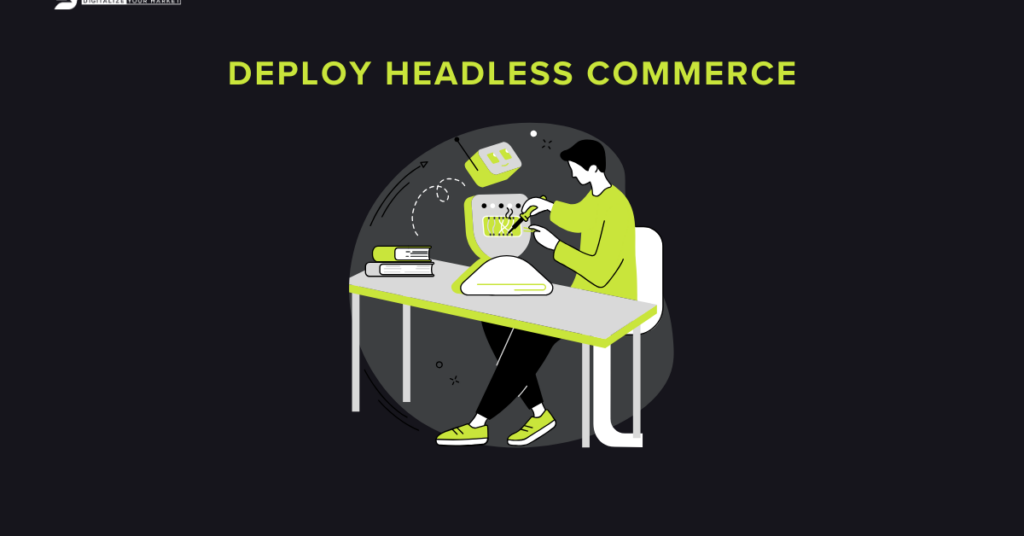
As the demand for flexibility and scalability continues to rise, alongside Headless Commerce, large businesses worldwide are increasingly focusing on the Composable Commerce model. Fortunately, Shopify is keenly attuned to customer needs and has recently introduced the Commerce Components by Shopify solution in early 2023.
As of the time of writing, Shopify stands as the first SaaS platform to provide a tech stack that can address nearly all the development needs of Composable Commerce.

While you may require considerable time to tailor your Shopify Plus store to your specific needs, the nature of SaaS ensures that the go-live process for Shopify Plus remains quicker compared to open-source platforms like Magento.
On average, the deployment and go-live time for the Shopify Plus platform is around 2-5 months, whereas with Magento, businesses take from 6-12 months to deploy and go live.

Shopify Plus provides a range of security measures and features to ensure that business data, customer information, and payment transactions are safeguarded to the highest extent possible. This includes:

Similar to other eCommerce platforms, Shopify Plus provides businesses with 24/7 support through hotlines, emails, and video calls in various languages. Additionally, this platform offers instructional materials, API documentation, and the Shopify Plus Merchant Success program where businesses can access:

Shopify Plus has a vast and diverse user ecosystem, including businesses, developers, and marketing experts. With numerous leading global businesses choosing Shopify Plus as a key tool to drive their growth and success, it is undoubtedly a testament to the excellence of this platform.

Renowned names such as Gymshark, Glossier, MZ Wallace, and Emma Bridgewater have leveraged the power of Shopify Plus to create customized shopping experiences, expand sales volumes, and reach a broader customer base. Their presence has added another reason encouraging you to switch to Shopify Plus.
With flexible customization, scalability, and support from a reliable team of experts, the decision to deploy eCommerce with Shopify Plus or migrate from another platform to Shopify Plus has been right for sustained and competitive growth in the eCommerce landscape.
Contact SECOMM or call the hotline at 028 7108 9908 for advice and support to swiftly and effectively switch to Shopify Plus.
 2
2
 6,589
6,589
 0
0
 1
1
Headless Commerce is a significant revolution in the technology sector, changing the way businesses approach eCommerce. In this field, Adobe Commerce leads in providing solutions and tools for implementing Headless Commerce.
Below is a list of 10 well-known brands currently utilizing Adobe Commerce and Headless Commerce.
Samsung is a multinational conglomerate based in South Korea, operating in various sectors, with its most prominent being consumer electronics, generating a revenue of $234 billion in 2022.

Samsung’s eCommerce website is built on the Adobe Commerce Cloud platform, utilizing Headless Commerce technology as its core. Thanks to this, Samsung has developed a virtual assistant to support customers in online and in-store shopping. In the U.S. market, customers can use this assistant to view product demos, receive usage instructions, and make online purchases. Customers have highly praised this feature for providing a more comfortable and convenient shopping experience.
Target Corporation is a major retail company in the United States, offering a wide range of products and services, including clothing, footwear, electronics, household goods, toys, and furniture. According to the financial report of Target Corporation in 2022, the revenue reached $106.8 billion, a growth of 8.4% compared to 2021.

Target recognized that the brand was losing revenue as customers began their shopping journey on one device and ended it on another. The retailer has implemented Headless Commerce to deploy omnichannel sales to increase conversion rates on various devices, thereby making it easier for customers to complete their purchase transactions.
Toyota is one of the largest automobile manufacturers in the world, selling over 10 million vehicles globally each year. Toyota produces a variety of vehicles and accessories, including cars, trucks, buses, and sports utility vehicles, as well as engines, transmissions, and auto parts.

Toyota’s website utilizes Headless Commerce to leverage Application Programming Interfaces (APIs) for integration with legacy systems and inventory management, providing a personalized omnichannel experience.
Under Armour is an American sportswear company founded in 1996 by Kevin Plank. The company is headquartered in Baltimore, Maryland, and specializes in the production of sportswear, footwear, and accessories, with an annual revenue of over $10 billion.

Currently, Under Armour is using Headless Commerce to enhance the personalized fitness experience based on location, purchase history, and workout activities, as well as training logs. The Under Armour website features notable functionalities such as inventory alerts, traffic history, payment information, and content management using data from the order management system.
Kirkland’s is a chain of home décor, furniture, textiles, accessories, and gift stores in the United States. The company is headquartered in Brentwood, Tennessee, and operates 431 stores in 35 states and an eCommerce website.

Kirkland’s has implemented Headless Commerce to address website-related issues such as flexibility, custom design, and providing a smooth shopping experience (single-click login and biometric payment capabilities).
Coca-Cola is a carbonated beverage brand established in 1886. It is currently the world’s best-selling beverage brand, available in over 200 countries and territories, with over 2 billion cans sold every day.

The Coca-Cola website utilizes Headless Commerce technology to leverage API integration, providing a seamless end-to-end omnichannel experience for global customers. This technology allows the business to expand through its markets, customize experiences, and integrate with third-party suppliers and solutions.
Technodom is one of the largest retailers in Central Asia, with an annual revenue of $800 million. This retail giant has around 9,000 employees, offering over 60,000 products and 4,000 categories.

Technodom has implemented Headless Commerce on Magento with a page load speed of under one second, thanks to the PWA (Progressive Web App) pre-rendering solution. Additionally, the website’s backend is integrated with Akeneo PIM (Product Information Management) and ESB (Enterprise Service Bus), essential components for businesses to efficiently manage and distribute their databases.
Helly Hansen is a renowned Norwegian company that manufactures and retails clothing, sports gear, and outdoor accessories. Established in 1877, the company is now one of the world’s leading fashion and lifestyle brands, with a revenue of $2.8 billion in 2022.
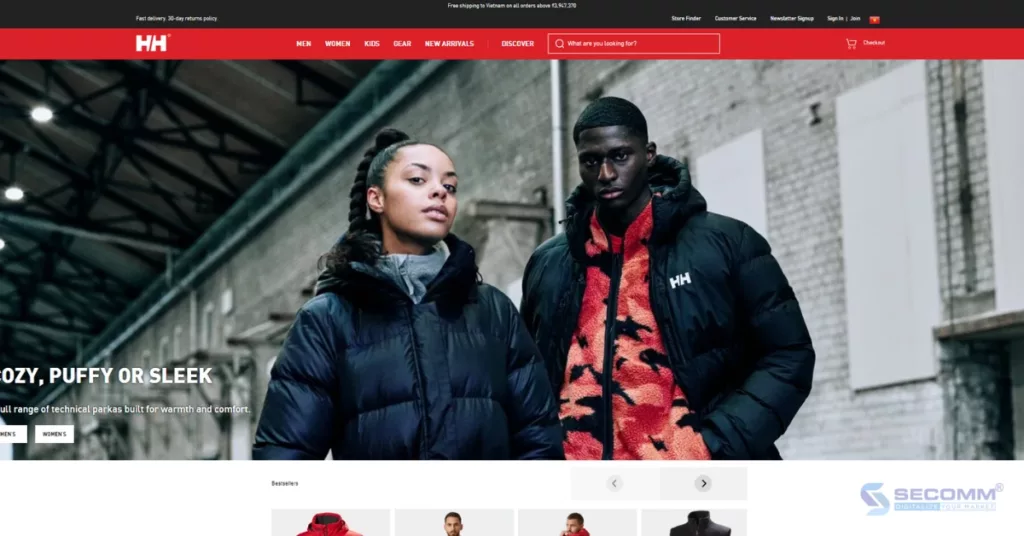
Initially, Helly Hansen’s eCommerce website was built on the Magento platform. After a period of business operations, Helly Hansen decided to transition to Adobe Commerce to implement Headless Commerce. As a result, Helly Hansen’s website quickly saw a 24% increase in traffic, a 48% increase in mobile traffic, and a more than 45% increase in total revenue.
Kaporal is a French fashion brand specializing in jeans, T-shirts, shirts, jackets, and accessories. The brand was established in 2004 and is currently present in over 30 countries worldwide.

Similar to many longstanding Magento businesses, Kaporal has migrated its platform from Magento 1 to Magento 2 to take advantage of the Headless Commerce features from PWA Studio, addressing issues related to slow speed and poor mobile performance.
G-SP is a brand specializing in the business of spare parts and digital accessories, established in 2009. This Swedish company currently has offices in Sweden, the Netherlands, and China, offering over 10,000 products.

Similar to many other Magento stores, G-SP faced issues with website performance and stability. Therefore, G-SP opted for Headless PWA to enhance their digital conversions. The implementation of Headless PWA accelerated the mobile website speed by 2.7 times, which is particularly crucial for a complex Magento website with numerous plugins and categories like G-SP.
Above is the list of the top 10 eCommerce websites currently using the Adobe Commerce (Magento) eCommerce platform and Headless Commerce globally.
With deep expertise and the development of complex eCommerce systems for clients such as Changi Airport Group (Singapore), Trentham Estate (Australia), and The Warehouse (Vietnam), SECOMM understands the challenges in choosing a platform and deploying eCommerce that businesses are facing.
Contact SECOMM now or call directly at the hotline number (028 7108 9908) for free advice on the eCommerce website building roadmap!
 2
2
 3,370
3,370
 0
0
 1
1
Magento and Adobe Commerce are considered popular eCommerce platforms, used by hundreds of thousands of businesses worldwide.
Both platforms have strong growth potential in the future, given the increasing trend of eCommerce and the demand for robust and flexible eCommerce solutions.
Magento is an open-source eCommerce platform used by over 300,000 eCommerce websites before being officially acquired by Adobe in 2018. Magento is known for its performance, user-friendliness, scalability, and security, especially in Magento 2.0.
Since its establishment, Magento has provided two main versions for businesses:
Currently, there are two main versions:
Magento Open Source and Adobe Commerce. Adobe Commerce is further divided into two versions, On-Premise (referred to as Adobe Commerce) and On-Cloud (referred to as Adobe Commerce Cloud).
Magento Open Source is a free, open-source eCommerce platform that requires users to have technical knowledge and skills to install, build, and manage the website. This platform also takes time and money to deploy basic to advanced features.
Key features include:
Depending on the complexity of the system, the cost of deploying a Magento website can fluctuate around $50,000 for the first year.
This is a paid on-premises service from Adobe, so this platform includes all the premium features of Magento Open Source and more.
After merging with Adobe, Magento Commerce was renamed Adobe Commerce and is considered part of the Adobe Experience Cloud—a set of solutions designed to help businesses make informed decisions and provide enhanced customer experiences based on detailed information and data.
Adobe Commerce is often integrated with Adobe Experience Manager, Adobe Analytics, and Adobe Target. Through Adobe Commerce, businesses have access to smart business services provided by Adobe, as well as machine learning capabilities and personalization provided by Adobe Sensei.
This makes Adobe Commerce the perfect eCommerce platform for businesses with complex needs and a desire to leverage leading capabilities to provide superior experiences for customers across multiple devices and channels. However, due to the relatively complex functional eCommerce website system on Adobe Commerce, businesses will need to be autonomous in the complex infrastructure as well.
The following diagram illustrates the reference architecture for deploying Adobe Commerce on AWS infrastructure. Other cloud service providers such as Azure, Google Cloud, and Alibaba Cloud also have similar infrastructure designs and services.

With all the reasons mentioned above, Adobe Commerce will have relatively high deployment costs, around $130,000 per project for the first year, depending on the complexity of the website system.
In contrast to the self-hosted version like Adobe Commerce, Adobe Commerce Cloud is a version that includes cloud services.
Specifically, this platform includes all the features of Adobe Commerce along with enhanced Adobe Cloud infrastructure, including integrated GIT (distributed source code management software) and specific environments for development, staging, and building the website system.
This means that developers using this platform can write code, test, and deploy on suitable environments, ensuring smooth performance.

Similar to Adobe Commerce, Adobe Commerce Cloud is also suitable for large enterprises with special requirements because this version can meet all specialized needs, with flexibility and scalability through available management features.
However, the cost for enterprises to deploy Adobe Commerce Cloud will be higher than Adobe Commerce, around $150,000 per project for the first year, depending on the complexity of the website system.
Read more: The cost of building an Adobe Commerce (Magento) website
Although Adobe Commerce and Magento share the same core technology platform, they have functional differences. Magento includes some core features, and businesses can develop or integrate additional features through extensions.
On the other hand, Adobe Commerce includes features from Magento Open Source, along with additional features developed by the Adobe team.
Similarly, Adobe Commerce Cloud includes features from Adobe Commerce, along with advanced and more specialized features designed to address specific challenges for each business.

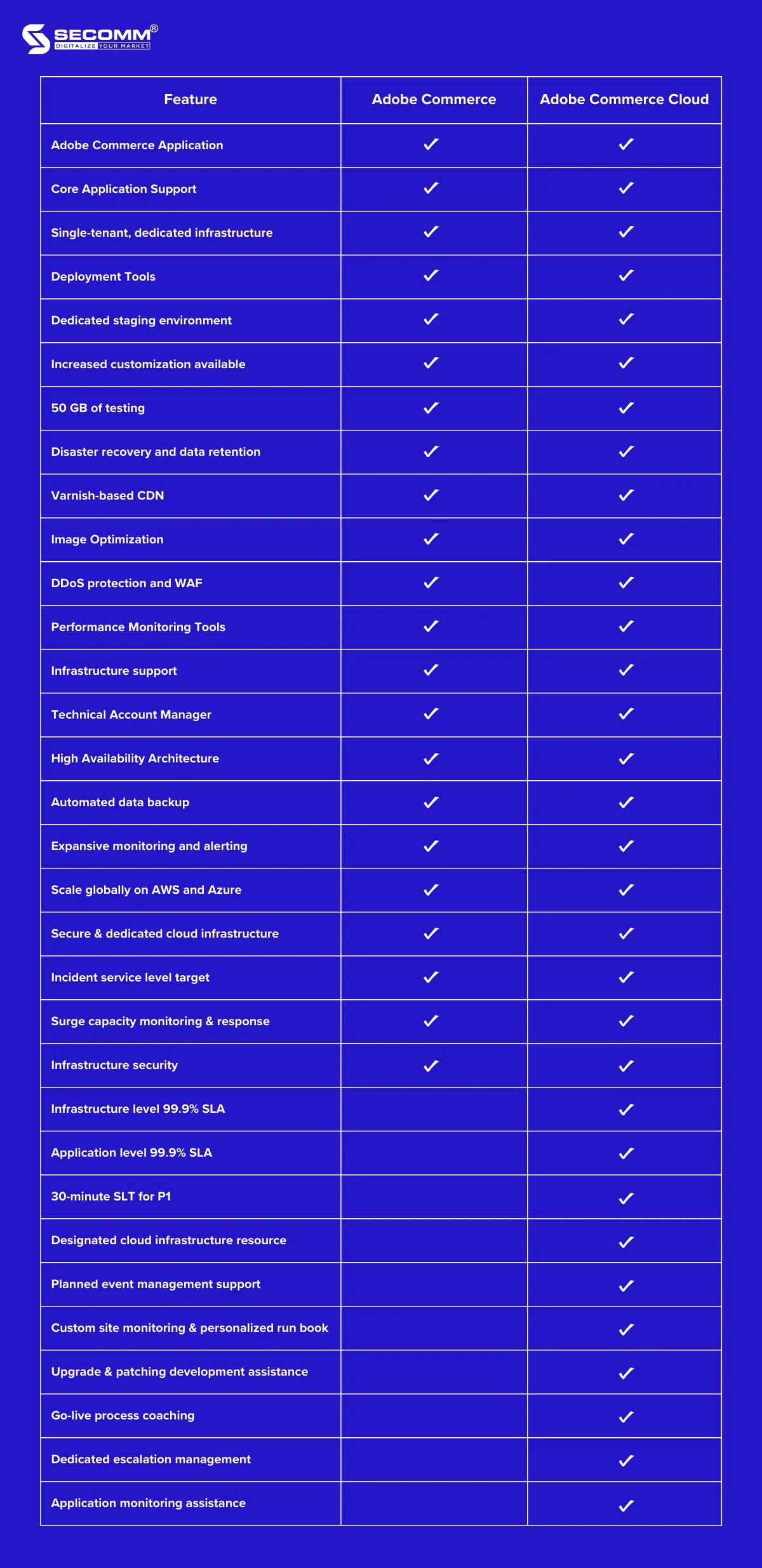
Besides the features, Magento and Adobe Commerce (both versions) also have some other differences.

Magento and Adobe Commerce are both powerful eCommerce platforms that can meet the needs of businesses of all sizes. However, there are some notable differences between these two platforms.
Choosing the right eCommerce platform for a brand depends on the specific needs and budget of each business. If a business is a small to medium-sized enterprise, newly entering the market, and only requires basic and advanced features, then Magento Open Source is a good choice.
However, if the business is large and complex, requiring extensive features and scalability, then Adobe Commerce is a better choice.
With deep expertise and the development of complex eCommerce systems for clients such as Changi Airport Group (Singapore), Trentham Estate (Australia), and The Warehouse (Vietnam), SECOMM understands the challenges in choosing a platform and deploying eCommerce that businesses are facing.
Contact SECOMM now or call directly at the hotline number (028 7108 9908) for free advice on the eCommerce website building roadmap!
Read more:
 8
8
 6,420
6,420
 0
0
 1
1
Among the eCommerce platforms that businesses consider choosing to develop their online stores, the two names Adobe Commerce and WooCommerce are always put on the scale for comparison.
Both are suitable for small and large businesses to build websites due to their flexible customization capabilities and high scalability. However, there are significant differences between WooCommerce and Adobe Commerce that are worth noting.
Adobe Commerce, formerly known as Magento Commerce, is an open-source eCommerce solution designed for medium to large-scale businesses, particularly those undergoing rapid growth and with high demands for customization and scalability.

Currently, Adobe Commerce offers two different version options:
Related article: Top 20 eCommerce websites using Adobe Commerce (Magento)
WooCommerce is an open-source eCommerce plugin developed for the WordPress platform, a widely used Content Management System (CMS) for creating and managing websites.

Consequently, WooCommerce is favoured by many businesses utilizing WordPress to develop their eCommerce websites.
Related article: Top 20 eCommerce websites using WooCommerce
Adobe Commerce and WooCommerce are two popular eCommerce platforms, but each platform serves different business needs due to differences in deployment costs, feature systems, scalability, and security.
The deployment costs of Adobe Commerce will depend largely on the version chosen by the business.

It can be seen that the deployment cost for an eCommerce website on Adobe Commerce is relatively high, starting from $15,000 per project for the Magento version and $130,000 per project for the first year with the Adobe Commerce version.
In contrast, the cost of using WooCommerce is entirely free, and the website construction cost is also relatively more budget-friendly compared to Adobe Commerce. Below are some estimated costs for deploying an eCommerce website on WooCommerce:

Note: These are only cost estimates. Actual costs may vary depending on factors such as needs, service providers, and optional features.
Adobe Commerce and WooCommerce are both comprehensive eCommerce platforms covering everything from A to Z. Both have their advantages and disadvantages, catering to the diverse functional needs of businesses.

In addition to the basic feature set, businesses also need to consider advanced features that the system can accommodate.
It can be seen that the feature system of Adobe Commerce is more comprehensive than WooCommerce, covering both basic and advanced functionalities.
Therefore, for small to medium-sized businesses just starting in eCommerce, WooCommerce is a suitable choice. If the brand is a large enterprise with the need to build a large, complex online store, Adobe Commerce would be a perfect choice.
Read more: Top 10 Features To Increase eCommerce Website Revenue
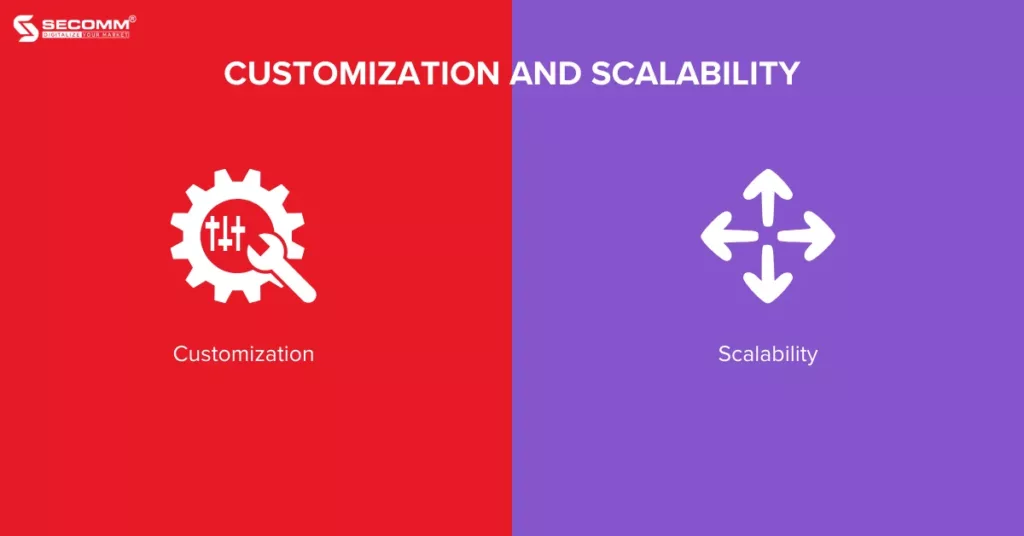
Adobe Commerce is an open-source platform, especially the Magento Open Source version, meaning developers can access the source code, making customization easier. This allows businesses to create features and integrate customizations to meet specific needs.
Similarly, WooCommerce also provides high customization capability with numerous available themes, plugins, and apps.
However, as a WordPress plugin, WooCommerce’s customization capability is not as extensive as Adobe Commerce.
Both platforms have high scalability to handle traffic and large transaction volumes. However, Adobe Commerce’s scalability is higher than WooCommerce’s, especially for businesses with large, complex product catalogues or significant inventory management needs.
In summary, Adobe Commerce offers higher customization and scalability capabilities compared to WooCommerce. Still, the website development process with Adobe Commerce is more complex, requiring developers with substantial experience and technical expertise.
Adobe Commerce and WooCommerce both provide features and tools for securing customer and business data. However, there are some notable differences in security capabilities between these two platforms.

Adobe Commerce offers a range of security features and tools, including:
WooCommerce also provides some security features and tools, including:
Similar to the above factors, Adobe Commerce is generally considered to have higher security compared to WooCommerce.
It can be seen that Adobe Commerce is rated higher than WooCommerce in many aspects. However, while WooCommerce is known for being a user-friendly platform, making it easy for businesses without strong technical capabilities to quickly deploy, Adobe Commerce requires a professional team to build and manage a highly customized, scalable, and complex system.
In general, WooCommerce is suitable for small to large businesses using WordPress, wanting to start e-commerce deployment, and requiring basic customization and expansion solutions. However, Adobe Commerce offers flexibility, customization, and scalability, making it more suitable for corporations with complex system requirements.
In reality, the more flexible and customizable platforms with high scalability, the more complex and costly the deployment process becomes. Therefore, businesses need to consider the scale and development needs to make an appropriate choice.
With deep expertise and the development of complex eCommerce systems for clients such as Changi Airport Group (Singapore), Trentham Estate (Australia), and The Warehouse (Vietnam), SECOMM understands the challenges in choosing a platform and deploying eCommerce that businesses are facing.
Contact SECOMM now or call directly at the hotline number (028 7108 9908) for free advice on the eCommerce website building roadmap!
Read more: Shopify Plus vs Adobe Commerce: Key Differences 2023
 2
2
 6,328
6,328
 0
0
 1
1
Adobe Commerce is an open-source eCommerce platform designed specifically for businesses ranging from medium to very large scales with high growth and significant customization and scalability needs.
Adobe Commerce has two versions, including:
According to reports from W3Techs and Adobe Commerce, as of July 2023, there are a total of over 367,000 eCommerce websites using Magento and Adobe Commerce. Among them, Magento holds about 5% of the global eCommerce market share, and Adobe Commerce holds about 3% of the global eCommerce market share.
See more: What is Adobe Commerce? Should we use Adobe Commerce?
Here is a list of 10 famous international brands and 10 famous brands in Vietnam currently using Adobe Commerce.
HP is a multinational IT company based in Palo Alto, California, specializing in the development of personal computers, printers, and related supplies, as well as 3D printing solutions.

HP deployed its first Magento Open Source 1 (formerly known as Magento Commerce) website in Thailand and Indonesia in 2013. When opening stores in China, they decided to switch to the Adobe Commerce version to support customers searching for products globally.
With Adobe Commerce, HP can further optimize the shopping experience and implement new features more quickly, helping the business achieve its eCommerce goals.
ASUS is an abbreviation for Asus Software Unit Systems, a multinational conglomerate headquartered in Taiwan, specializing in the manufacturing of electronic products and computer hardware. ASUS was founded in 1989 and is currently one of the world’s largest computer manufacturers.

ASUS aimed to have a unified platform for both B2B and B2C eCommerce, so the business chose Adobe Commerce for its flexibility in integration, high customization, and streamlining of support processes.
Hydro Flask is a brand of thermal flasks and water bottles established in 2009 in Seattle, Washington, USA. The brand is known for its high-quality, well-insulated, and visually appealing products.

Hydro Flask utilized Magento Open Source to build and develop its eCommerce website due to its ability to provide the necessary features and functionalities.
Filson is an outdoor gear manufacturing company based in Seattle, Washington, USA. The company was established in 1897 by Charles Filson, a tailor and cobbler. Filson specializes in producing high-quality, durable products designed for outdoor activities such as camping, fishing, hiking, etc.

In 2022, Filson adopted Magento 2 to build its eCommerce website. With the microservices architecture of Magento 2, Filson can easily customize and scale its eCommerce website as needed.
Alshaya is one of the major franchise operators globally, managing brands such as American Eagle Outfitters, H&M, Debenhams, Victoria’s Secret, Bath & Body Works, The Body Shop, Boots, and M.A.C in the United Arab Emirates (UAE). As shopping habits began to change, Alshaya gradually shifted towards developing its eCommerce sector and decided to choose Adobe Commerce to build its website in 2017.

“Thankfully, when COVID-19 hit, we had already built up the digital framework to launch new websites quickly. And because we had built our approach on the Adobe Commerce global reference architecture, we were able to leverage parent configurations rather than building new sites from scratch. With IT complexity removed from the equation, we were able to roll out the new sites in a matter of weeks.” – Marc van der Heijden, Chief Technology Officer, Alshaya Group.
Catbird is a high-end jewelry brand established in 2004 in New York City, USA. The brand is known for its delicate and artistic designs. Catbird’s products are crafted from various materials, including gold, silver, gemstones, etc.

Catbird has utilized Adobe Commerce to build custom functionalities for the jewelry eCommerce industry, including notifications for available, and out-of-stock items, and advance delivery notices to ensure customers can view complete inventory. According to Ali Ahmed, the Founder of Imagination Media, “Like Catbird, Adobe Commerce is a truly robust, dazzling, and creative platform that allows us to build and create basically whatever we want because it is open and extensible”.
DKNY, short for Donna Karan New York, is a high-end fashion and apparel brand founded by designer Donna Karan in 1989. DKNY is known for its youthful, modern, and highly practical fashion products.

DKNY leveraged Magento to build its fashion eCommerce website in 2023. Thanks to the advantages of open source, DKNY prioritizes user interface personalization, showcasing its distinctive brand style, and providing advanced features such as intelligent product search, product previews, and product customization.
Ranking: 95,191 (US) & 173,066 (Global)
Volkswagen Classic Parts is a part of the Volkswagen Group, responsible for supplying genuine replacement parts for classic Volkswagen vehicles. Volkswagen Classic Parts is headquartered in Wolfsburg, Germany, and operates in over 100 countries worldwide.

The eCommerce website for Volkswagen parts features around 60,000 accessories, catering to the needs of both new and seasoned Volkswagen enthusiasts, bringing joy to fans of classic Volkswagen vehicles.
Initially, Volkswagen used Magento Commerce 1 for several years and reaped significant benefits from this open-source platform. Recently, Volkswagen Classic Parts decided to upgrade to Adobe Commerce and utilize Adobe Experience Manager to further develop the brand in the eCommerce market.
Laybyland is a ‘Buy Now, Pay Later’ retail business for consumer electronics established by Stuart Duff in 2012 in Australia. After two years of operation, Laybyland realized that the current CMS system using Drupal was not meeting the operational requirements and struggled to handle the growing data volume.

Therefore, Laybyland chose SECOMM to migrate the website to a robust eCommerce platform like Magento Open Source. With over 10 years of operation, thanks to a unique business strategy—the exclusive Lay-by payment process allowing customers to customize the time and frequency of instalments when shopping online—and a professionally controlled eCommerce system by SECOMM, Laybyland expanded the ‘Buy Now, Pay Later’ retail system to two other major markets, the United States and New Zealand.
“SECOMM’s technical expertise allowed us to successfully overcome these development challenges and deploy a website that has performed exactly as we wanted from day one.” – Stuart Duff, CEO at Laybyland
Covento is a young business in the renewable energy sector, operating in five countries: Denmark, Germany, Spain, the Netherlands, and France. At Covento, users can find the necessary spare parts/components for turbine models from various manufacturers and suppliers.

Jill Ashley Brandt, CEO of Covento, plans to leverage the continuous improvements of Adobe Commerce to make Covento more user-friendly for buyers and suppliers in the U.S. market, serving the goal of expanding the business.
Di Dong Viet is a reputable brand in the field of electronic devices and a strategic partner of global technology conglomerates such as Apple, Samsung, OPPO, Sony, ASUS, and more.

By using Magento Open Source, Di Dong Viet has successfully built a high-quality eCommerce website with features such as product management, shopping cart, online payment, order management, and various other extended features to create a convenient online shopping experience for customers.
CGV is one of the top 5 largest cinema chains globally and is a major film distributor and cinema chain in Vietnam, alongside Galaxy, Lotte Cinema, BHD Star Cineplex, and CineStar.

CGV has built an eCommerce website on the Magento Enterprise platform (the paid version of Magento, now known as Adobe Commerce) to meet the feature requirements suitable for large enterprises like CGV.
Established in 2009, Kids Plaza is a major player in the eCommerce race in the Baby industry. Kids Plaza has deployed an eCommerce website on the Magento platform to efficiently manage a diverse and extensive product portfolio. The brand regularly runs promotional programmes such as gift shopping promotions, flash sales, buy 5 get 1 free, and loyalty point accumulation for attractive rewards.

This has contributed significantly to the increase in website traffic on every promotional occasion, and deploying Magento can enhance customization and scalability to handle sudden traffic increases. On average, the website receives about 1 million visits per month.
Hoang Phuc International is a high-end fashion retailer for Kappa, Ecko Unltd, Superga, Replay, and Staple, established in 1989. After three decades of traditional business development, the brand decided to transition to participate in the eCommerce market.

To successfully develop the current eCommerce website, Hoang Phuc has used and converted many platforms. As of now, the business is using the Magento platform – an open-source eCommerce platform specializing in eCommerce.
Bach Long is one of the popular retailers of smartphones, tablets, and technology accessories in Vietnam. Similar to other consumer electronics retailers like CellphoneS, Di Dong Viet, Bach Long Mobile also chose the Magento platform to build their websites.

Therefore, the brand’s website has seen significant improvements in features, customization capabilities, and performance, helping the company attract more customers, grow its market share, and increase revenue and profits.
On Off is a lingerie brand established in 2005 with a mission to bring daily comfort to everyone.

On Off has chosen the Magento Open Source version, the free version of Magento, to build its eCommerce website to meet the company’s specific needs for features, customization capabilities, and system scalability.
EROPI is another prominent jewelry brand in Vietnam, specialising in distributing various types of gold, silver, jewelry, gemstones, pearls, wedding jewelry, and feng shui jewelry. After many years of operation, the company has not only expanded its chain of stores nationwide but also developed an online sales channel to meet the shopping needs of customers.

The primary online channel that EROPI focuses on is the eCommerce website built on the Magento Open Source platform with superior customization capabilities. This allows EROPI to develop advanced features and flexible scalability, ensuring the long-term development goals of the business.
At first, the company was established in 2006 under the name Uma Furniture Supermarket and officially changed its name to Baya Furniture and Decoration Supermarket in 2019. Despite the name change, the brand still retains its core values and brings customers high-quality furniture with simple, elegant designs, in line with contemporary trends, featuring neutral colours, and each piece having its own beauty.

As of the current time, Baya’s website attracts nearly 100,000 visits per month, thanks to the proper investment in building an eCommerce furniture website with the open-source Magento platform. The website features an attractive, captivating interface that is user-friendly.
Rohto is a well-known Japanese pharmaceutical and cosmetic brand established in 1899, specialising in manufacturing and selling eye care, skincare, lip care, hair care, cosmetics, pharmaceuticals, etc.

Rohto Vietnam’s eCommerce website is built on the Magento Enterprise version. Through Magento, the website is designed with an attractive and user-friendly interface, integrating features and customer support services to make shopping easier and more convenient.
Annam Gourmet, born out of a deep passion for European cuisine by the founders of the Annam Group, has been a strong player in the Vietnamese market for over 20 years. The Annam Gourmet store chain has expanded significantly, offering imported high-quality products such as premium food, wine, beverages, and cosmetics.
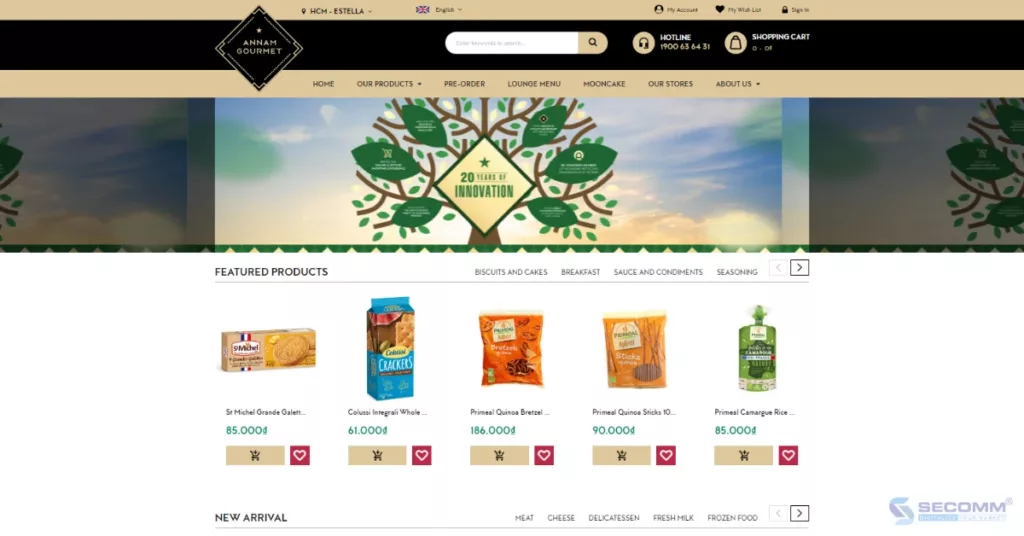
While Annam Gourmet had an existing online presence, it was primarily used for brand development, and the effectiveness of eCommerce was not a primary focus. To ensure the website is fully developed and operates smoothly, Annam Gourmet chose SECOMM and strategic partner Synova to develop the eCommerce website on the Magento Open Source 2 platform.
Here is a list of the top 20 eCommerce websites using the Adobe Commerce (Magento) eCommerce platform in both the international and Vietnamese markets.
With deep experience and the development of complex eCommerce systems for clients such as Changi Airport Group (Singapore), Trentham Estate (Australia), and The Warehouse (Vietnam), SECOMM understands the challenges in choosing a platform and implementing eCommerce that businesses are facing.
Contact SECOMM now or call directly on the hotline (028 7108 9908) for free advice on developing eCommerce on the Adobe Commerce (Magento) platform!
 2
2
 9,716
9,716
 0
0
 1
1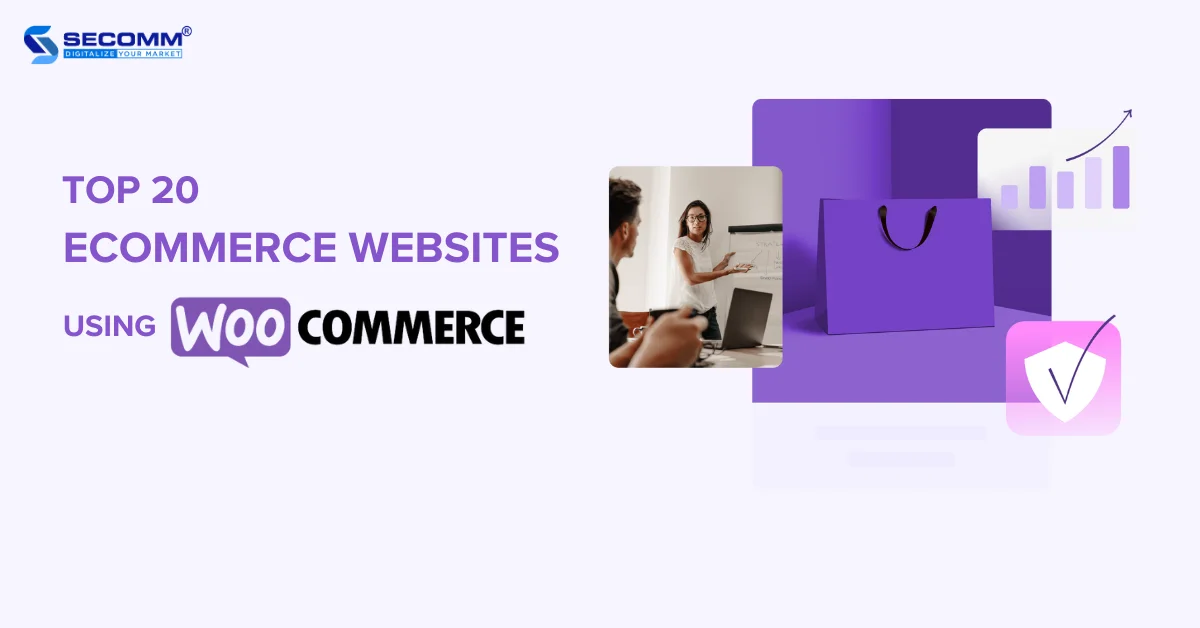
WooCommerce is an open-source plugin for WordPress, that enables businesses to turn their brand’s content website into an online store. According to WooCommerce’s report, as of July 2023, over 6 million eCommerce websites are using WooCommerce, capturing more than 25% of the global eCommerce market share.
Here are some well-known brands using WooCommerce in both the international and Vietnamese markets.
Established by Dr. William Mathias Scholl over 110 years ago, Dr. Scholl’s has become a trusted name in foot health care. The brand is known for various innovative products, from shoe insoles and foot-shaping tools to specialized treatment methods.

Despite being a globally renowned brand, Dr. Scholl’s continues to advance with strategies to maximize online sales. By utilizing the open-source eCommerce platform WooCommerce, Dr. Scholl’s has streamlined the process of building an eCommerce website and rationalized the online sales process.
Wienerschnitzel is the world’s largest hot dog chain, founded by John Galardi in 1961. Currently serving over 120 million hot dogs annually, Wienerschnitzel’s website is built using WooCommerce to enter the eCommerce market.

This system also connects franchisees with the main management system, allowing customers to easily locate the nearest restaurants through Google Maps API.
Superdrug Health Clinics is the second-largest well-known health clinic in the UK, with a presence throughout the United Kingdom. The clinics at Superdrug offer various eCommerce pharmaceutical services such as vaccinations for children, sexual health screenings, flu vaccinations, and occupational health services.

By building a basic eCommerce website using WooCommerce, customers can schedule free consultations with nurses/pharmacists or book appointments at specific locations.
GoComics is a popular online comic and cartoon business in the United States. Some iconic cartoons associated with GoComics include Calvin and Hobbes, Garfield, Peanuts, and The Far Side, alongside recent successes like Pearls Before Swine, The Boondocks, and Foxtrot.

By building a WooCommerce website, users can choose between two membership options – free and premium – to gain personalized access to the GoComics library and shop online for items such as art prints, books, and calendars, ideal for comic enthusiasts of all ages.
The Kind Pen is a vape (electronic cigarette) manufacturing company based in Ocean City, New Jersey, USA. With a lifetime warranty and over 1,000,000 satisfied customers, this brand has quickly become a trusted name in the industry.

Kind Pen has decided to use WooCommerce to enhance the user experience on its online store. Images are optimized and converted into fast-loading formats without compromising quality, CSS and JavaScript files are compressed and merged, and with WordPress and WooCommerce extensions, the results have yielded unexpected benefits for user experience, such as a more than 35% increase in website loading speed.
Badeloft is an online retailer of bathroom fixtures founded by Cedric Christiani in Berlin, Germany, in 2009. After achieving certain successes in their home country, Cedric set his sights on the U.S. market. He recruited some high school friends, Eric Jensen and Tyler Kuhlman, and together, they established Badeloft USA at the end of 2013. Today, the company has rapidly expanded to the point where its sales have surpassed the European market.
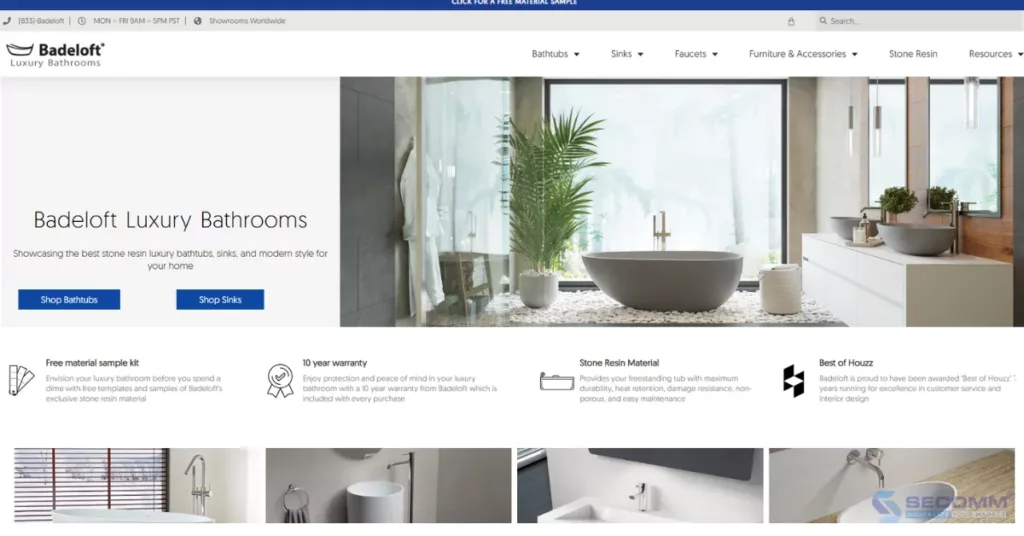
In 2017, Badeloft decided to transition its eCommerce website platform from X-Cart to WooCommerce due to its customization capabilities and the availability of numerous extensions.
All Blacks is the national rugby team of New Zealand and is the most successful international sports team in the past 100 years. With such a long and illustrious history, it’s no surprise that the team’s jerseys, training gear, and support equipment are highly favoured by fans worldwide.
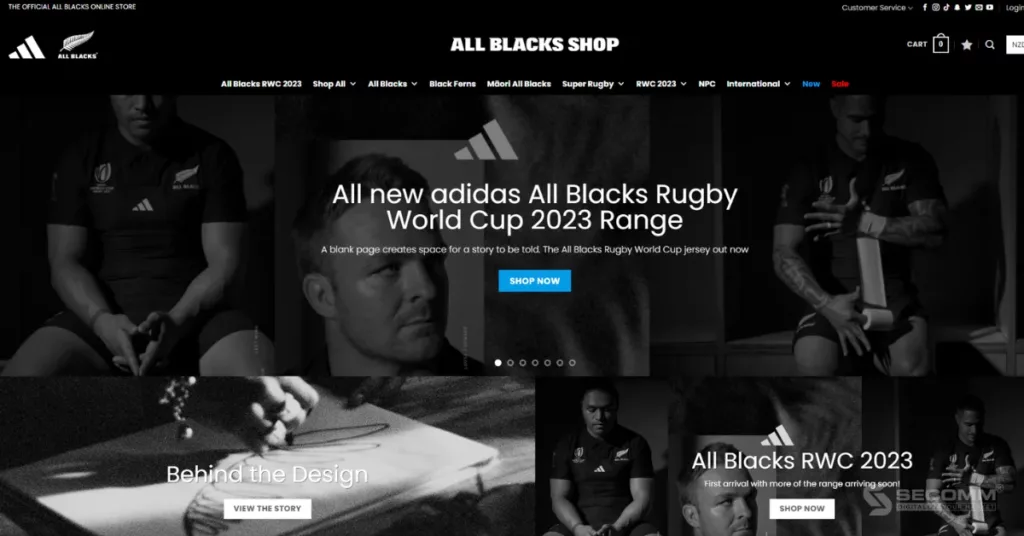
This provided the foundation for All Blacks to establish an online store for the brand on WooCommerce, offering a variety of products for supporters of all ages.
“We selected WooCommerce as it allowed for easy integration into the team’s other back-office systems.“– Norm McKenzie, Meta Digital
Telldus is a Swedish brand specializing in home automation products, aiming to provide simple solutions to everyday problems to enhance one’s quality of life tremendously.

“We believe that simple solutions to small everyday problems can increase one’s quality of life tremendously.”
To expand its customer base in Sweden, Tellus chose WooCommerce to build its website due to its customization capabilities and support for integration with enterprise resource planning (ERP) systems and product information management (PIM).
Grace Loves Lace is a wedding fashion brand founded by Megan Ziems in 2011 in Australia. The brand is renowned for its beautiful, handcrafted, and custom-fitted wedding attire.

After years of development in both offline and online markets, Grace Loves Lace has become one of the most popular and successful eCommerce websites for wedding fashion nationwide. The success is, in part, attributed to the WooCommerce website system designed to focus on professional product images and optimized for high conversion rates and mobile-friendliness.
Daelmans Stroopwafels is the world’s leading company in Stroopwafels (traditional Dutch syrup waffles). Established in 1909, Daelmans has elevated the stroopwafel to become a globally popular pastry.
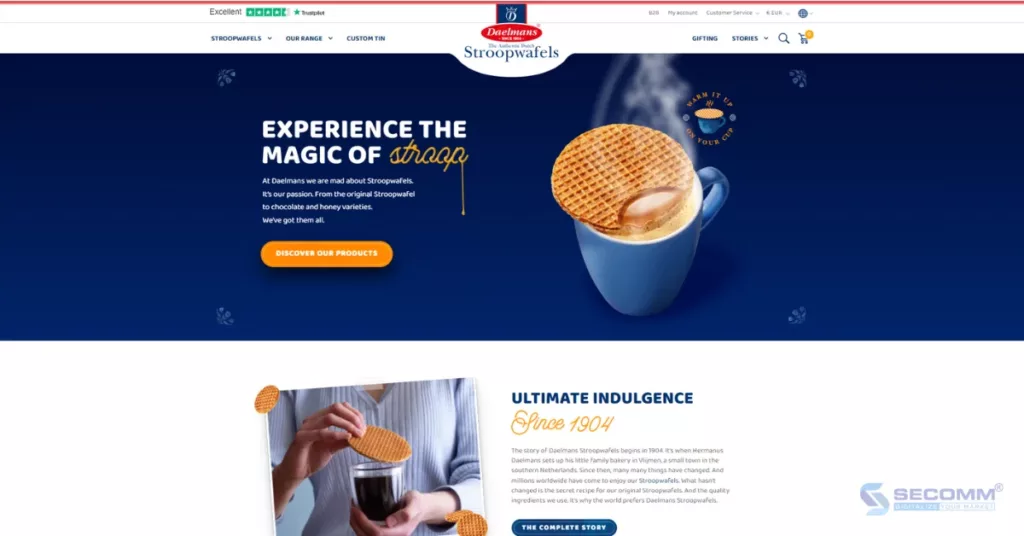
Over the years, the small bakery in Vlijmen has evolved into an international business. Therefore, building a WooCommerce website is essential, allowing customers to shop online and design their custom stroopwafel boxes.
Established in 1991, Hải Triều has over 30 years of experience in the watch market. To become the leading watch retailer in Vietnam, Hải Triều has combined its eCommerce strategy on the WooCommerce platform with a unique business model to adapt to changes in the market and consumer preferences.

As of now, Hai Trieu’s eCommerce website has over 2 million monthly visits and is a prominent figure consistently topping the rankings in the fashion eCommerce sector in Vietnam (according to iPrice).
Dien Thoai Vui – The name carries a commitment to bring joy and happiness to customers with damaged phones or other electronic devices such as laptops, tablets, smartwatches, etc.
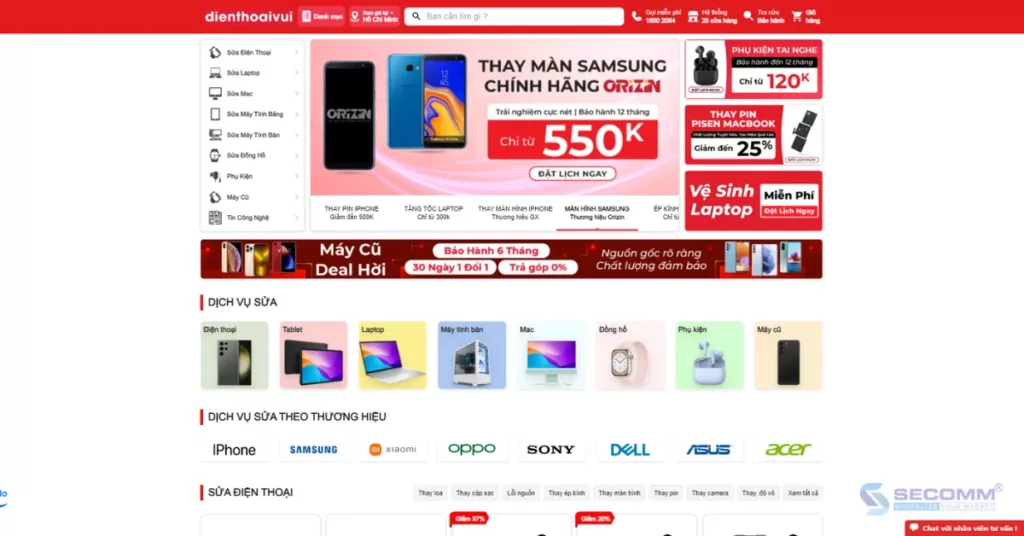
After many years of operation, Dien Thoai Vui has become a familiar destination for many customers both online and offline. The website system of Dien Thoai Vui is built on WooCommerce, allowing customization to a certain extent for the consumer electronics industry’s functionalities, as well as supporting integration with many third-party services.
Clickbuy is a well-known retail system for technology products in Vietnam, established in 2012. Currently, the Clickbuy system has expanded to include 5 stores and 2 modern service centres in Hanoi and Ho Chi Minh City.
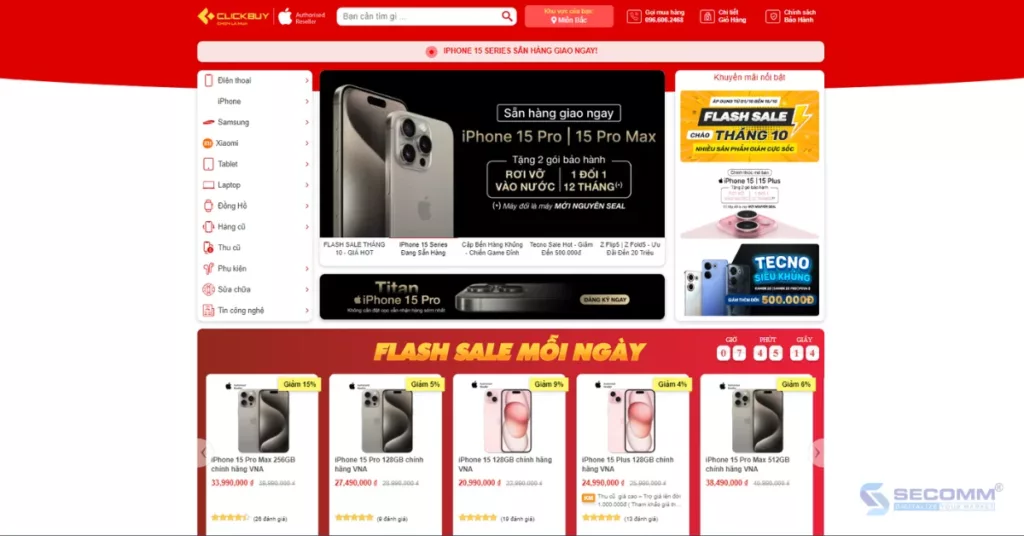
Similar to Dien Thoai Vui, Clickbuy is also built on WooCommerce due to its customization capabilities and integration with many third-party services through WordPress.
Nha Thuoc Than Thien is a retail pharmacy chain meeting GPP standards in Vietnam. This brand specializes in prescription drugs, over-the-counter medicines, and some other healthcare products.

The business combines an offline pharmacy model with an online pharmacy through its main sales channel, an eCommerce website developed with WooCommerce. The website is designed for easy navigation, featuring basic functionalities that help customers easily search for products, make purchases, and track orders.
Paula’s Choice is a skincare and cosmetics brand founded by Paula Begoun, a leading expert in beauty and skincare. This brand is renowned for producing high-quality and meticulously researched skincare products, often recognized for their simplicity and transparency in ingredient disclosure.

After establishing a presence in the Vietnamese market, Paula’s Choice decided to build a website on the WooCommerce platform for the ability to customize the website and leverage the existing functional system.
Beauty enthusiasts in Ho Chi Minh City undoubtedly know about Bo Shop, a brand that offers a wide range of quality cosmetics from skincare to makeup at specific and affordable prices, catering to all beauty care needs.

To become the leading cosmetics retail brand in Vietnam, the company swiftly developed an eCommerce website with WooCommerce to align with modern business trends.
AB Beauty World (ABBW) emerged amid the Covid-19 pandemic in 2020, positioning itself as the leading family cosmetics hypermarket in Vietnam. Despite the seemingly untimely launch, the brand did not succumb to adversity.
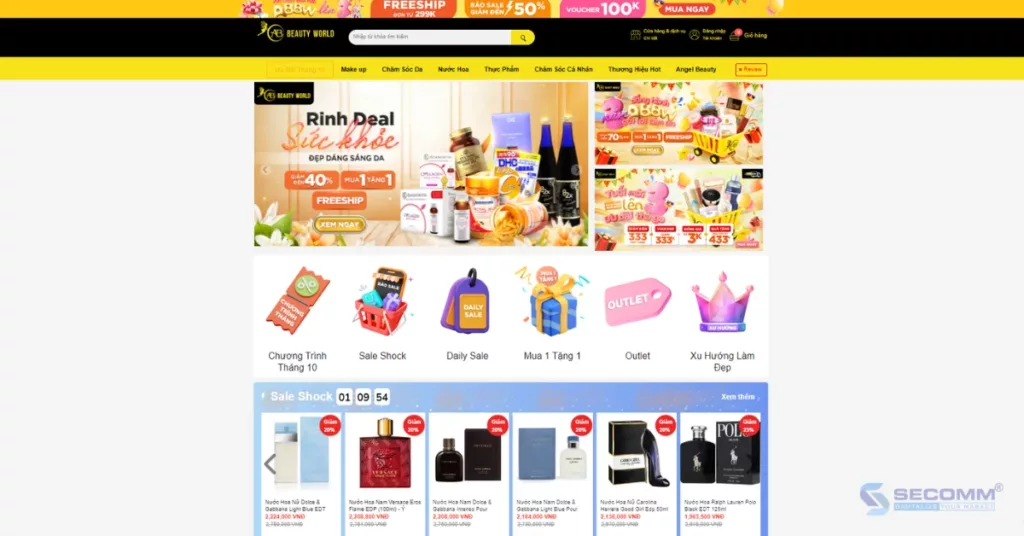
Just two years after opening its first store, AB Beauty World has grown and expanded to nearly 20 branches across districts and neighbourhoods in Ho Chi Minh City, thanks to timely adaptation and a focus on eCommerce development.
The cosmetics selling website of AB Beauty World is built with WooCommerce, featuring industry-specific design and functionality. In a short time since its launch, the website has garnered high traffic for a newcomer in the digital transformation race.
Founded in 2004, Orchard is the destination for over 200 premium perfume brands worldwide. To become the number one perfume retail brand in Vietnam, Orchard early on implemented eCommerce to tap into the ‘gold mine’ of this market.

To date, Orchard’s eCommerce website, built with WooCommerce, is the top choice for customers who love to shop for perfumes online.
With a minimalist and cosy interior design style, Nhà Xinh (Beautiful Home) chooses simplicity for each of its products. This is evident in the eCommerce website’s interface, which is built on the WooCommerce platform, and features a simple and user-friendly design.
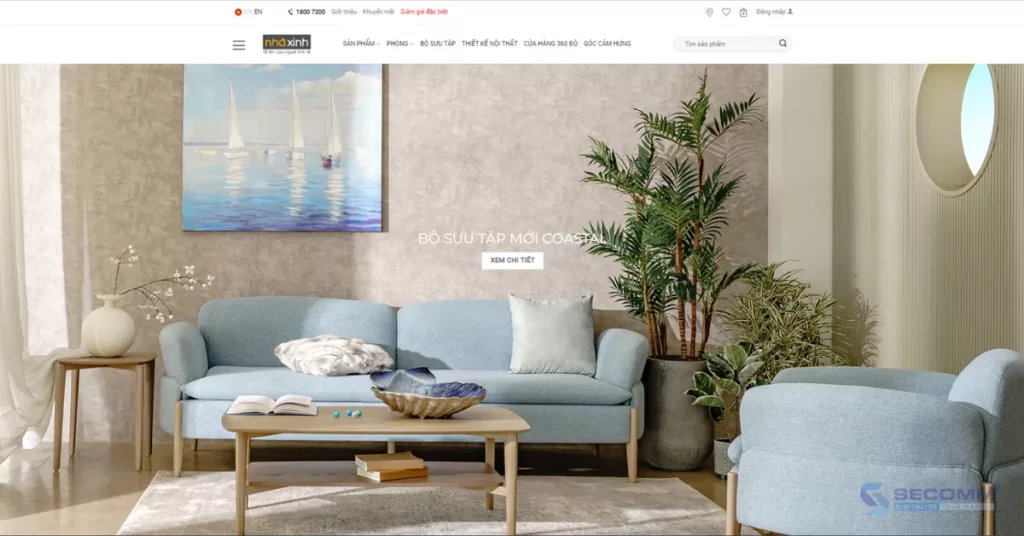
In addition, Nha Xinh’s website incorporates 360-degree technology, allowing customers to experience the company’s furniture products remotely in a realistic manner, exploring every nook and cranny of the room and every angle of the product with detailed information and pricing for each item.
Established in 2007, Vietnam Wine Cellar Co., Ltd. is one of the largest wine companies in Vietnam, specializing in providing a wide range of products, including wine, beer, whiskey, food, mineral water, tea, and high-quality ceramics.

Winecellar pursues an eCommerce business model by investing in building a website on the WooCommerce platform. Through this, the company can easily reach numerous potential customers in the online market.
Above is a list of the top 20 eCommerce websites using the WooCommerce platform in both the international and Vietnamese markets.
With deep expertise and experience in developing complex eCommerce systems on WooCommerce for various clients such as Laybyland (Australia, the US, New Zealand), Jasnor (Australia, New Zealand), and The Warehouse (Vietnam), SECOMM understands the challenges in choosing a platform and implementing eCommerce solutions that businesses are currently facing.
Contact SECOMM today or call directly on the hotline (028 7108 9908) for a free consultation on deploying a WooCommerce website for your brand.
 2
2
 8,227
8,227
 0
0
 1
1
According to Grand View Research, the global jewelry eCommerce market is predicted to reach USD 117.8 billion by 2027, with a CAGR of 12.2% from 2022 to 2027. According to Research and Markets, the United States is the largest jewelry eCommerce market in the world, with expected revenue of USD 45.6 billion by 2027. Other regions, including China, India, and Southeast Asia, are also experiencing rapid growth.
Several jewelry brands have successfully implemented eCommerce early on and achieved unexpected success, such as Cartier, Tiffany & Co., PNJ, ANA LUISA, Missoma, etc. The common characteristic of these brands lies in comprehensive eCommerce websites that cater to customers’ needs for purchasing jewelry and gemstones.
For more information:
With nearly 10 years of experience in eCommerce, SECOMM has outlined the common journey of building jewelry eCommerce websites in Vietnamese businesses.

Firstly, businesses in the jewelry industry need to clearly define their goals and prioritize each of these goals when planning the development of an eCommerce website.
In the long-term vision, businesses may be interested in building and strengthening their brand presence in the online market, exploring the potential of online customers, and optimizing business operations from online to offline.
For short-term objectives, businesses may prioritize monitoring and analyzing customer behaviour on the website, assessing the effectiveness of online marketing campaigns to improve sales performance.
When setting objectives, the timeframe is also a crucial factor. Businesses may choose to deploy quickly to penetrate the eCommerce market or even opt for a gradual deployment to have time for testing, evaluation, and adaptation to this large and competitive market.
Currently, two popular types of platforms support the development of eCommerce websites: SaaS (Software as a Service) and open source.

Read more:
Typically, new businesses entering the eCommerce market will choose SaaS platforms to save time and costs during the initial stage of building an eCommerce website. Subsequently, businesses may transition to open-source platforms for the development of more advanced eCommerce websites.
However, businesses can also choose an open-source platform right from the start to build a basic eCommerce website and later upgrade the system over time on the same platform to avoid the need for platform migration in later stages.
When designing the website interface, businesses need to meet basic criteria such as UI/UX standards, reflecting the brand’s characteristics, presenting products consistently, providing complete usage instructions, etc.

Currently, there are three ways to design the interface, including:
In this stage, businesses often choose ready-made themes to save costs, but some financially stronger businesses may opt for the other two methods to better position their brand.
In this stage, businesses can prioritize the development of basic functions to meet the most fundamental needs when operating a jewelry eCommerce website. Some essential functions that should be included in a jewelry eCommerce website are:
After successfully completing the features, testing, and launching of the website, the business needs to fulfil legal procedures related to eCommerce operations. According to Decree 52/2013/ND-CP issued by the Government of Vietnam, individuals or organizations owning eCommerce websites for sales are required to notify or register with the Ministry of Industry and Trade through the Public Service Portal of the Ministry of Industry and Trade.
Note: Websites that operate for an extended period or fail to register/notify the competent management authority within the specified time frame may be subject to administrative penalties as stipulated by the regulations.

When a business is in the development phase and the market is undergoing significant changes, adjusting objectives becomes necessary. This is particularly crucial when leadership needs to review the business strategy and make decisions regarding investing in an eCommerce website, including both time and budget considerations.
In this phase, businesses often focus on setting short-term and long-term goals for the online jewelry business system. For long-term objectives, businesses may consider expanding the brand presence in the market, building a loyal customer program, and promoting the purchasing habits of jewelry and gemstone customers in the middle and upper classes. These goals lay the foundation for sustainable development and prosperity in the future.
Regarding short-term goals, businesses may concentrate on attracting additional potential customers, increasing revenue, and supporting the eCommerce marketing strategy. Tools such as Influencer Marketing may be prioritized to drive rapid growth and create immediate business opportunities.
Overall, establishing specific goals and adjusting them based on market conditions and business development is a crucial part of managing and succeeding in the eCommerce jewelry industry.
When basic SaaS platforms are no longer sufficient to support the expansion of the website system, businesses will need to transition to more specialized platforms such as Adobe Commerce, Shopify Plus, BigCommerce Enterprise to develop a more advanced eCommerce jewelry website.

Read more:
Of course, when switching platforms, businesses will face challenges such as conversion costs, time required for staff training on the new platform, and potential data loss during the platform migration.
To build a professional and complex eCommerce website, businesses need to choose suitable resources to implement the project. Generally, there are two main options: building an in-house team or partnering with a professional development partner. Regardless of the choice, specialized knowledge and experience in the chosen field are crucial.
When deciding to build an in-house team, businesses need to recruit and train IT and eCommerce personnel with knowledge and practical experience on the chosen platform. This may require a significant amount of time and financial resources to build a suitable workforce. However, this approach allows the business to have better control over resources and the ability to make adjustments, developing the website system according to specific requirements.
Another option is to collaborate with a professional development partner. In this case, businesses should seek a partner with extensive experience in eCommerce, a professional team, clear work processes, and the ability to handle complex projects. Collaborating with specialized units helps businesses learn and accumulate more experience while developing an eCommerce website that suits the specific characteristics of the jewelry industry.
Therefore, the choice between building an in-house resource and collaborating with a development partner depends on the goals, resources, and specific requirements of the business.
During the platform transition process, businesses may decide to keep the current website interface if the brand believes it still aligns with the strategy and the new platform. However, many businesses often choose to redesign the interface to ensure that the eCommerce website reflects the brand’s business strategy and the new platform accurately.

Similar to the previous stage, businesses have several options when designing the eCommerce website interface: using ready-made themes available on the market, customizing themes, and designing a unique interface.
In the jewelry industry, customizing or designing a unique interface is often prioritized to showcase the uniqueness and sophistication of the products. However, the final decision should be based on the business strategy and resources available.
After choosing a suitable conversion platform, the redesign of the system and platform conversion is crucial. This requires a high level of expertise from solution architects to design a system that can address the challenges the business is facing and align with the long-term development journey and business model of the enterprise.
In addition, the process of migrating data also needs to be carried out carefully to limit the risk of data loss or errors for the business. Typically, data conversion is automated as much as possible to avoid potential errors.
The platform conversion process includes the following steps:

In addition to basic functions, at this stage, businesses should focus on building more sophisticated system functions, including advanced and industry-specific features for the jewelry sector.

Furthermore, businesses need to continuously innovate and update to develop user-friendly functions and keep up with market trends.
Operating an eCommerce system is an ongoing process that businesses must carry out to ensure the system operates smoothly and efficiently. This process includes the following crucial tasks:

Additionally, continuous care, maintenance, updates, and upgrades of the website system are essential for businesses to sustain sustainable growth and adapt quickly to changes in the eCommerce market, especially in the jewelry and gemstone product sector.
After a period of operation, businesses should shift their focus to eCommerce marketing strategies or omnichannel strategies to boost the sales of jewelry products.
Implementing omnichannel involves setting up a seamless sales, marketing, and management system through various channels such as the website, social media platforms (Facebook, Instagram, Zalo, TikTok Shop), and eCommerce platforms (Shopee, Tiki, Lazada, Sendo) to optimize the customer experience and enhance business efficiency.
Developing a comprehensive marketing strategy and plan based on key eCommerce marketing channels such as Content Marketing, SEO/SEM, Email Marketing, and Affiliate Marketing is essential for rapid business growth.
In conclusion, the journey of building an eCommerce website for the jewelry market in Vietnam is not an easy one. This journey requires businesses to invest a significant amount of time and budget to research the most suitable eCommerce strategy for each stage of their development.
Understanding the difficulties and challenges that businesses face when building an eCommerce jewelry website, SECOMM is ready to provide free consultations and detailed solutions for the development of an eCommerce system tailored to the specific needs of each business.
Contact SECOMM today or call directly at the hotline (028 7108 9908) for a free and detailed consultation.
 2
2
 8,623
8,623
 0
0
 1
1
eCommerce is increasingly thriving and becoming a popular sales channel, especially in the jewelry industry, with global eCommerce jewelry sales reaching $100 billion in 2022 and projected to reach $150 billion in 2025.
To harness the immense potential of this market, choosing the right eCommerce platform is a crucial part of the success of your jewelry business in this billion-dollar market
Read more: What opportunities are open to jewelry eCommerce?
A professional interface is one of the crucial criteria to consider when building an eCommerce website for jewelry. This criterion helps businesses create a positive impression on customers, increase conversion rates, and boost sales.

Here are some factors to note when designing the website interface:
When building a jewelry website, in addition to basic eCommerce functions, businesses need to focus on developing advanced features that address industry-specific needs:
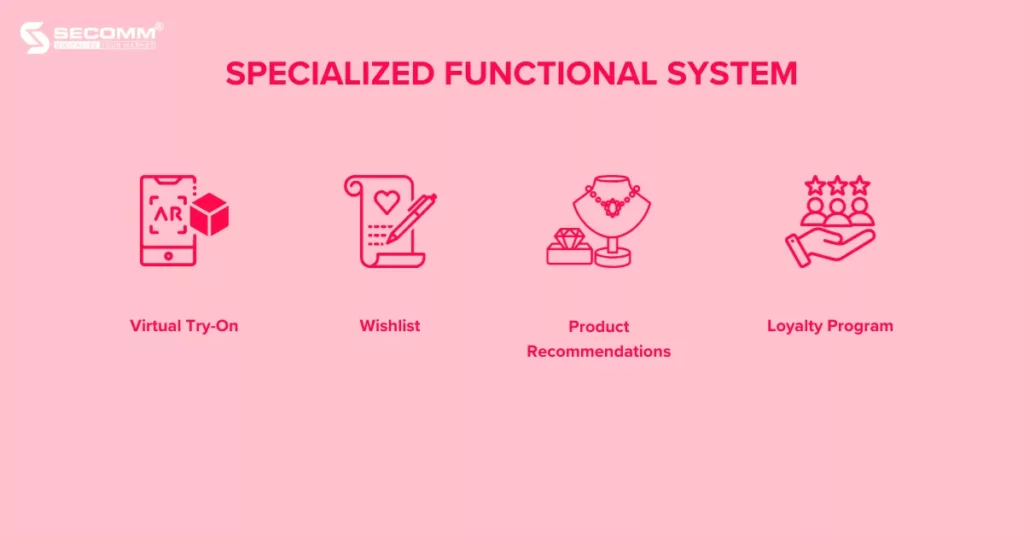
An eCommerce jewelry website needs to have high scalability to meet the evolving needs of the business in the future. Here are some factors to consider when evaluating scalability:
Jewelry is a high-value item, so an eCommerce jewelry website needs to have high security to ensure the safety of customer information and prevent fraudulent activities and theft online.
As eCommerce jewelry websites often require customers to provide personal information such as name, address, phone number, email, credit card details, bank account numbers, etc., for ordering and payment purposes, ensuring the security of this information is crucial. If this information is compromised, customers may fall victim to scams, lose money, or have their privacy violated.
Shopify is a SaaS eCommerce platform founded in 2006. Over the years, Shopify has rapidly become a leading platform in the eCommerce industry, supporting numerous businesses worldwide in establishing and growing their online presence.

The costs associated with using the Shopify platform vary and include:
Read more: Top 5 benefits when applying Headless Commerce in 2023
Evaluating the suitability of Shopify for the jewelry industry:
Several jewelry businesses currently utilizing Shopify for their eCommerce websites include Made by Mary, MISSOMA, Pura Vida Bracelets, and J&CO.
Shopaccino is a SaaS platform established in 2014 in India, specializing in assisting both B2C and B2B businesses in building eCommerce websites across various industries, including the jewelry sector.

Shopaccino currently offers three main solutions:
Evaluating the suitability of Shopaccino for the jewelry industry:
Some jewelry businesses currently using Shopaccino include Navratan, KOSH, Bibelot Jewels, Greytone, Hiranya Store, Lavie Jewelz, and Euro Gems S.R.L.
Shift4Shop is an eCommerce platform developed by Shift4 Payments, a technology payment company. Shift4Shop provides a comprehensive eCommerce solution for businesses of all sizes and industries, including jewelry businesses.

Currently, Shift4Shop only offers services in the U.S. market with four solutions ranging from free to fee-based:
Evaluating the suitability of Shift4Shop for the jewelry industry:
Some brands currently using Shift4Shop include Jewelry Supply, Too Cute Beads, Sasha’s Gemstone Jewelry, Alara Jewelry, Diamond Jewelry NY, and Just Mens Rings.
WooCommerce is an open-source eCommerce plugin developed for the WordPress platform, one of the most popular content management systems (CMS) worldwide. WooCommerce allows businesses to turn their WordPress websites into online stores or integrate eCommerce features into existing websites.3

The cost of using WooCommerce depends on the complexity of each project, averaging $1,000 for a basic eCommerce website and $10,000 for a deeply customized eCommerce website.
Evaluating the suitability of WooCommerce for the jewelry industry:
Some businesses using WooCommerce to build jewelry websites include April Soderstrom, NEWTWIST, Waufen, Hyo Silver, Alkemistry, Oxétte, Arden Jewelers, and Binenbaum Antiques & Jewelry.
Adobe Commerce, formerly known as Magento Commerce, is a professional and popular eCommerce system. Adobe Commerce is part of the Adobe Experience Cloud product line and is designed to help businesses build eCommerce websites.

Currently, Adobe Commerce offers two main versions:
Read more: Magento Open Source vs Magento Commerce Real Comparison
Evaluating the suitability of Adobe Commerce for the jewelry industry:
Some businesses using Adobe Commerce to build jewelry websites include True Facet, Hannoush, Judaica, Mikimoto, Charles and Colvard, J.R.DUNN, and EraGem.
Above are some eCommerce platforms suitable for the jewelry eCommerce industry. This list is just a few examples for businesses to consider, as there are many other eCommerce platforms that businesses can explore based on specific needs and available resources.
Understanding the challenges and difficulties that businesses may face when building a jewelry eCommerce website, SECOMM is ready to provide free consultations on detailed eCommerce system development solutions for businesses.
Contact SECOMM today or call directly at the hotline number (028 7108 9908) for free and detailed advice.
 2
2
 9,280
9,280
 0
0
 1
1
Baby eCommerce is a promising market experiencing a steady annual growth rate (CAGR 2023-2027) of 9.86%, projected to reach a market value of approximately USD 129.40 billion by 2027.
To tap into this market, you’ll need to develop a professional and efficient eCommerce website. Here are 10 steps to create an eCommerce website tailored for maternity and baby products.
The first step is to identify your business goals and prioritize them, forming a plan tailored to develop an effective Baby eCommerce website.
Concerning long-term goals, you may focus on objectives like establishing a strong brand presence, reaching potential customers, and enhancing the efficiency of both online and offline operations.
For short-term goals, businesses can give priority to activities like monitoring, analyzing customer behavior, assessing the effectiveness of marketing campaigns, and boosting revenue.
When it comes to timeline, you can decide to deploy quickly to enter the market or proceed gradually to test and adapt to this eCommerce world.
As for the budget, it depends on your business strategy and financial capacity for this Baby eCommerce development project.
Currently, there are two types of eCommerce platforms to help you build your first Baby website: SaaS (Software as a Service) and Open-Source platform.
Some popular SaaS eCommerce platforms include Shopify, BigCommerce, Squarespace, and Wix.

In addition, there are premium versions of these SaaS platforms such as Shopify Plus, BigCommerce Enterprise, and Goflow.

Some open-source platforms are widely used: Adobe Commerce (Magento), WooCommerce, OpenCart, and PrestaShop.

Typically, some new businesses choose basic SaaS platforms to save time and budget in the initial phase of the Baby eCommerce website development. After a while, they may switch to a premium SaaS or an open-source platform to develop their baby websites more advanced.
In another case, some businesses opt for open-source platforms to build a basic eCommerce website and then gradually upgrade the system over time to minimize the need for platform switching in later phases.
Typically, most eCommerce businesses decide to initially partner with a professional development agency and gradually build their in-house team.
For establishing an in-house team, you’ll need to recruit and train IT and eCommerce professionals for expertise on the chosen platform. It’ll take you significant time and budget but allow you to have full control over your resources. You can develop and adjust your Baby eCommerce website according to your needs and wants.

When it comes to partnering with an agency, here are some criteria you need to evaluate:
Partnering with a professional development agency gains you specialized eCommerce knowledge, enhances your technical skills, and above all, you’ll facilitate the eCommerce website exactly what you need, tailoring it to the unique features of the maternity and baby industry.
When it comes to UI/UX design, it’s important to showcase the brand image, products, user guide, etc. There are three popular ways to make your design:
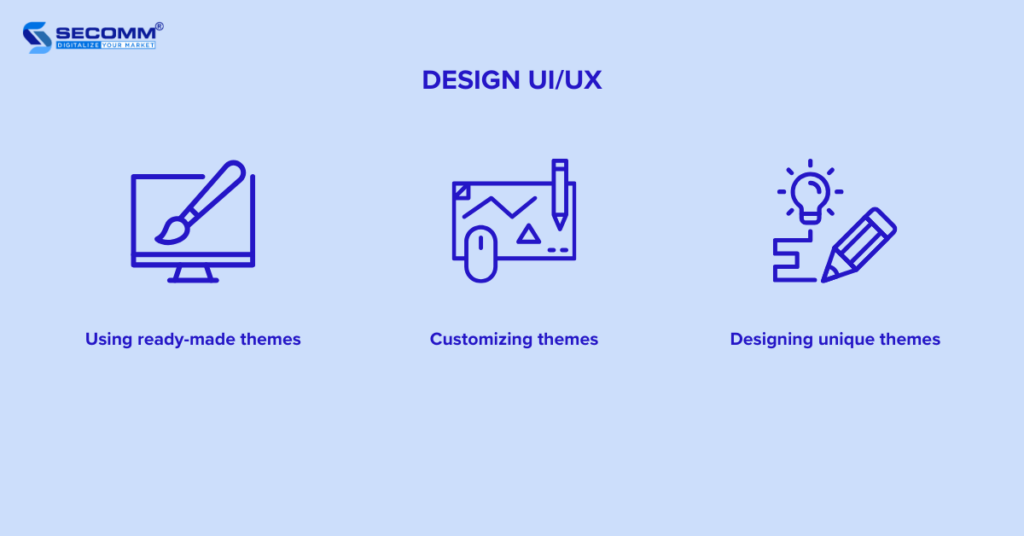
Some essential features that a Baby eCommerce website should have include
Some advanced features for the baby eCommerce industry:

After developing features and ensuring a successful testing and website launch, you’ll need to complete the legal procedures associated with eCommerce operations.
According to Decree 52/2013/ND-CP by the Government of Vietnam, any individual or organization owning an eCommerce website for sales is required to notify or register with the Ministry of Industry and Trade through the online public service portal of the Ministry of Industry and Trade.
Note: Websites that operate beyond the specified period or fail to register/notify the authorized management agency within the designated timeframe may be subject to administrative penalties as per regulations.
When QC/testing your eCommerce website, you can leverage either the Waterfall or Agile model to test the entire system.

Using these models helps you review and test your entire eCommerce system, functions, and features within a specified timeframe, ensuring optimal order processing speed and overall website stability. In case of any issues, your in-house team or development partner will help you to address them before officially going live.
When the QC/testing process is done, your baby eCommerce website is ready to launch. To ensure a smooth go-live process, here are three steps you should prepare:

Running a baby website is an ongoing effort aimed at ensuring the steady and effective functioning of the system. This involves various activities, including:
Furthermore, you should regularly maintain, update, and upgrade the website system to achieve sustainable growth, adapting quickly to shifts in the eCommerce world or the maternity and baby products market.

After a period of operation, you should shift your focus toward eCommerce marketing strategies or Omnichannel to expand your online presence in the market of maternity and baby products
businesses should redirect their focus toward implementing eCommerce marketing strategies or embracing Omnichannel approaches to expand their online presence in the market of mother and baby products.
Implementing Omnichannel involves setting up a seamless sales, marketing, and management system across channels such as the website, social media platforms (Facebook, Instagram, Zalo, TikTok Shop), and online marketplaces (Shopee, Tiki, Lazada, Sendo) to optimize the customer experience and boost business efficiency.
Developing a comprehensive marketing strategy, centered around key eCommerce marketing channels like Content Marketing, SEO/SEM, Email Marketing, and Affiliate Marketing, becomes crucial for achieving rapid sales growth.
The Bottom Line
In general, the journey of building a baby eCommerce website for the Vietnamese market isn’t an easy task. It requires you to invest a significant amount of time and budget in researching the most fitting strategies tailored to each phase of your eCommerce development.
Understanding the difficulties and challenges that businesses may encounter when building a baby eCommerce website, SECOMM is ready to provide free consultation on detailed eCommerce solutions.
Reach out or call the SECOMM hotline at 028 7108 9908 to get started!
 2
2
 6,050
6,050
 0
0
 1
1
In the ever-growing digital age, online drugstores have become an ideal destination for global users seeking convenient and safe ways to care for their health and purchase medications online. The robust growth of eCommerce and changes in user behavior have driven the expansion of this pharmaceutical eCommerce industry.
Below are some crucial insights into why pharmaceutical eCommerce has become an essential component of the modern healthcare system.
Pharmaceutical eCommerce has become a promising business model in recent years. According to the “Healthcare eCommerce Global Market Report” compiled by The Business Research Company, pharmaceutical eCommerce is categorized into three main models:

This is a model that enables consumers to order and purchase various products such as prescription drugs, over-the-counter medications, vitamins, dietary supplements, healthcare, personal care, etc., through online shopping channels.
Some well-known pharmaceutical eCommerce by type examples include Droga Raia (Brazil), Netmeds (India), Pharmacity (Vietnam), etc.
Consumers can access healthcare consultation, advice, and diagnostic services through various applications for this type of pharmaceutical eCommerce. Under this model, consumers typically subscribe to and pay for these services through packages or on a subscription basis (monthly or yearly).
Companies adopting this service-oriented eCommerce model include Teladoc (USA), iCliniq (India), SBB Healthcare (Vietnam), and others.
This pharmaceutical eCommerce model often involves websites or applications created by hospitals/clinics to assist patients in scheduling appointments, offering healthcare packages, prescription medications, and more.
Examples of hospitals/clinics following the eCommerce model by end-users include The Royal Melbourne Hospital (Australia), NYC Health+ Hospital (USA), Vinmec (Vietnam), and others.
Certainly, Covid has not only led to a rise in traditional healthcare expenditures but has also acted as a driving force for pharmaceutical eCommerce. In the United States, telehealth visits witnessed a remarkable surge of 2,600% in March 2020 (during the peak of the COVID-19 outbreak in the U.S.) compared to the same month in 2019.
The growth of the pharmaceutical eCommerce market seems unabated. According to a recent report by CMS, total healthcare spending in the United States reached $3.8 trillion, marking a 4.6% increase in 2022. The Asia-Pacific region is anticipated to experience rapid growth in healthcare eCommerce, with a projected CAGR of 20.5% from 2020 to 2027.
Nielsen predicts that the pharmaceutical eCommerce market in Vietnam will attain a value of $10 billion by 2025.
Some other reasons for the rise of pharmaceutical eCommerce include:
Apollo Pharmacy is a well-known retail pharmacy chain in India, affiliated with the Apollo Hospitals. After years of operation in the healthcare sector, Apollo decided to establish an eCommerce website to serve millions of customers nationwide. The Apollo eCommerce website is built on the Magento platform, ensuring the capability to manage an extensive product catalog.

Beyond selling prescription and non-prescription drugs, as well as health care products, Apollo also provides various related services. Among these, notable offerings include online consultation services, health check-up appointments, vaccination appointments, and insurance sales.
Teladoc Health, Inc. is an American healthcare technology company headquartered in Purchase, New York. The company provides remote healthcare services, including video consultations, phone consultations, and remote health monitoring.
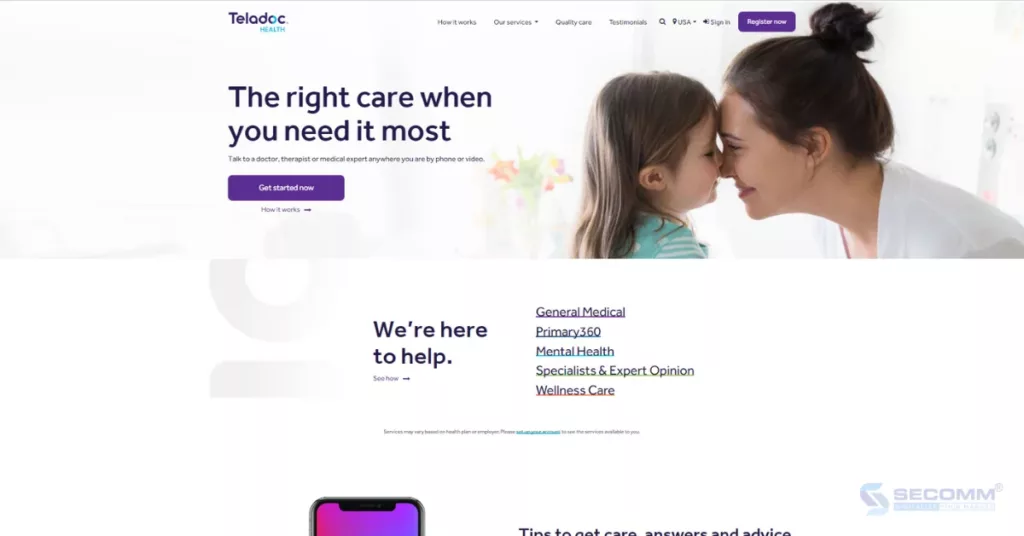
By rapidly deploying a website and eCommerce application, along with the utilization of cutting-edge technologies such as artificial intelligence (AI), machine learning (ML), and data analytics, Teladoc has been able to enhance customer experience and deliver improved remote healthcare services.
Mayo Clinic was founded in 1889 by Dr. William W. Mayo and his two sons, Dr. Charles and Dr. William J. Mayo. Initially, Mayo Clinic was a small clinic specializing in providing healthcare services to the local community. However, the hospital quickly expanded and became one of the leading hospitals in the world.

Much of Mayo Clinic’s success can be attributed to the early adoption of eCommerce, allowing patients to schedule appointments, check test results, and purchase medications online. This has helped patients save time and effort, contributing to Mayo Clinic’s overall success.
Learn more: The 10 Best Remarkable Pharmacy eCommerce Websites
The Bottom Line
Pharmaceutical eCommerce not only brings convenience and diverse choices for consumers but also presents attractive business opportunities for healthcare enterprises. If invested systematically and guided correctly, businesses in this field can seize significant opportunities in this promising market.
With extensive experience in implementing eCommerce for customers in various countries, SECOMM understands the difficulties and challenges that businesses face during the deployment process.
Contact SECOMM now or call directly at the hotline number (02871089908) today for a free consultation
 2
2
 13,758
13,758
 0
0
 1
1Subscribe to get the latest eBook!
Hotline